- Distinctive design inside and out
- Better value than electric variant
- Loaded with standard equipment
- The similar CX-30 is a better car
- Still not cheap to buy or service
- Thirsty drivetrain despite being a mild hybrid
We recently drove the electric Mazda MX-30, which was recently launched to the Australian market. It’s a coupe-styled small SUV that uses the underpinnings of the CX-30 – another small SUV – and is Mazda’s first fully electric car, which was designed primarily for European markets. But unlike Europe, the Japanese and Australian markets are also getting a petrol-powered MX-30 that’s – thankfully – much less expensive than its electric sibling. What’s the 2021 Mazda MX-30 G20e Astina like? Let’s find out.
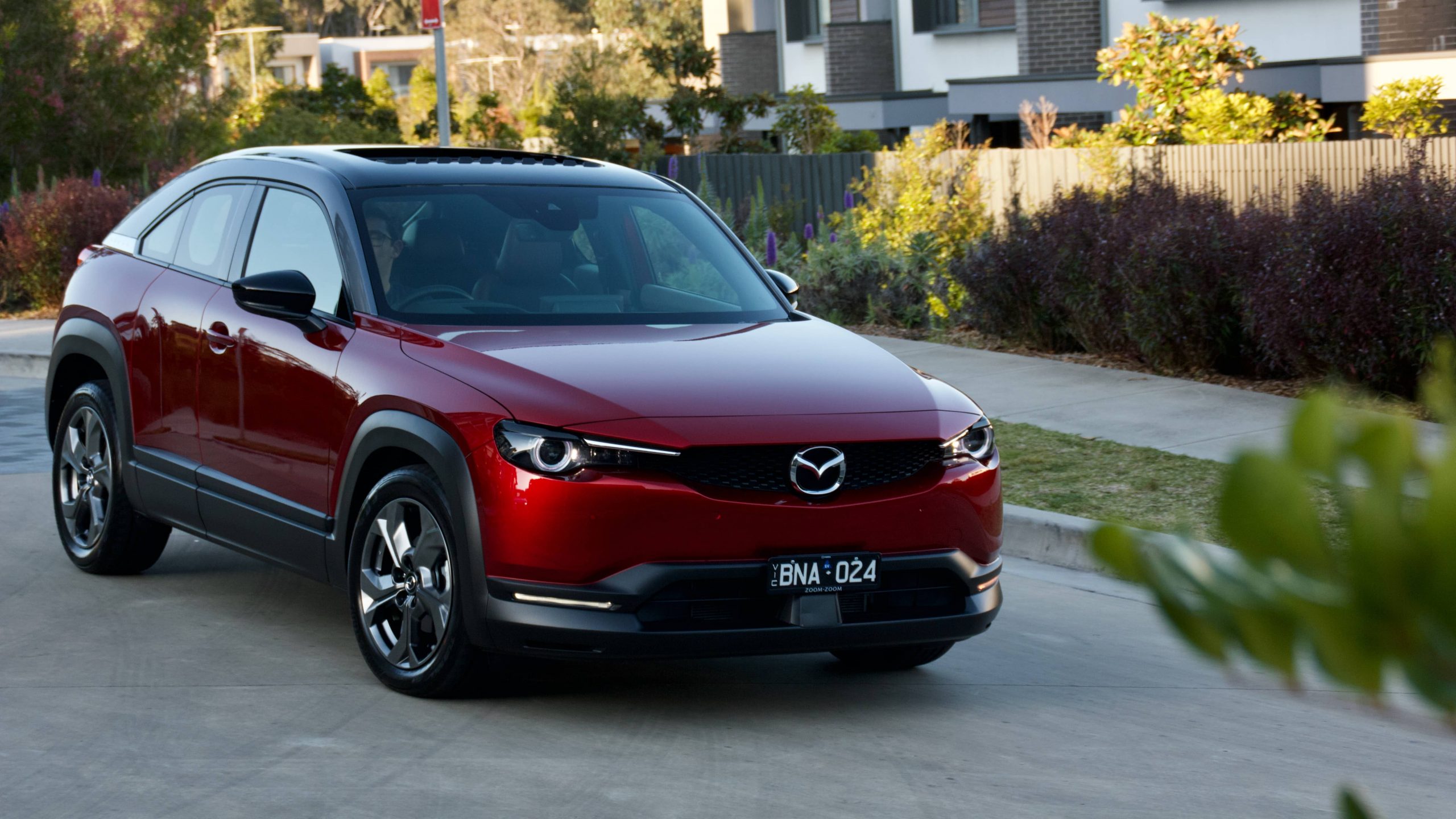
Price & Equipment: 8/10
Priced at $40,990 plus on-road costs ($45,628 drive away), the 2021 Mazda MX-30 G20e Astina is fully loaded. Standard kit includes 18-inch alloy wheels, all-LED lighting, auto lights and wipers, an 8.8-inch infotainment screen with wired Apple CarPlay and Android Auto, satellite navigation, digital radio, a sunroof, a leather steering wheel, half faux-leather/cloth trim, a 10-way electrically adjustable driver’s seat with memory functionality, heated front seats and a heated steering wheel, two USB ports, dual-zone climate control, keyless entry and start, heated and auto-folding mirrors, an auto-dimming rear view mirror and a 231-watt 12-speaker Bose sound system.
Standard safety kit includes eight airbags, auto emergency braking (AEB) with pedestrian, cyclist and intersection assist, Matrix active high beam functionality for the headlights, front and rear cross-traffic alert, blind-spot monitoring, lane keep assist, adaptive cruise control with stop and go functionality, auto rear braking, a heads-up display, a 360-degree parking camera, front and rear parking sensors, driver attention monitoring, speed sign recognition, lane trace assist and tyre pressure monitoring.
| 2021 Mazda MX-30 G20e Astina | |
| Pricing (drive away in NSW): | $45,628 ($46,536 with metallic paint) |
| Engine and transmission: | 2.0-litre four-cylinder petrol, mild-hybrid, six-speed auto |
| Power and torque: | 114kW/200Nm |
| Fuel economy: | 6.5L/100km claimed, 8.2L/100km as tested |
| Warranty: | Five year/unlimited km |
| Service pricing (five years): | $1,945 ($389 per service) |
| Fuel type: | 91RON standard unleaded |
There are a range of colours available including ‘Arctic White’, ‘Ceramic Metallic’, ‘Jet Black’ and ‘Machine Grey’ and ‘Polymetal Grey’ – the latter two are $495 extra. ‘Ceramic’ can be had with a black roof for an extra $995, while ‘Polymetal Grey’ and ‘Soul Red Crystal’ can also be had with black roofs for an extra $1,490. Our test car was painted in ‘Soul Red Crystal’ with the black roof and is priced at $46,536 drive away.
Competitors to the petrol-powered MX-30 are actually quite rare – we’re surprised that there aren’t more coupe options in the small SUV segment as yet. As it stands, there are two competitors to the MX-30: the $41,610 drive away Toyota C-HR Koba Hybrid and the new $44,989 drive away Renault Arkana R.S. Line. There’s a juicy premium for the MX-30 over its competitors, though it is better equipped with a full safety suite, a sunroof, Matrix headlights, premium audio and so on – but similar money gets you a loaded CX-30 with a larger 2.5-litre engine, or a second-from-top CX-5 GT.
Performance & Economy: 6/10
Under the bonnet of the 2021 Mazda MX-30 is the brand’s ‘SkyActiv-G’ 114kW/200Nm 2.0-litre four-cylinder petrol engine that’s matched to a six-speed automatic transmission with paddle shifters as standard. This engine is also used in the CX-3, CX-30, Mazda3 and CX-5 in Australia, but unlike those cars, it’s matched to a mild-hybrid system in the MX-30.
The mild-hybrid system doesn’t add to the car’s overall outputs, instead, it’s really an extended stop-start system that shuts the engine off earlier. It’s not a full hybrid system that you’d find in the Toyota C-HR hybrid – the MX-30 cannot be driven alone on fully electric power and it provides no noticeable boost in performance either. The mild hybrid MX-30 is not fast, and any meaningful progress needs a firm push of the throttle – luckily the six-speed automatic transmission is really intuitive and does its best to mask the engine’s lack of oomph.
Mazda claims that the MX-30 will use 6.5L/100km on a combined cycle and we achieved 8.2L/100km on a combined cycle, which isn’t great. The MX-30 uses 91RON fuel and features a 50-litre fuel tank. The kicker? A CX-30 with the same (non-hybrid) drivetrain officially uses 6.4L/100km – 0.1L/100km less than this MX-30. The full-hybrid C-HR? Just 4.3L/100km. The turbo petrol Arkana? 6.0L/100km – and that’s with 62Nm more torque than the Mazda as well.
We think it was a missed opportunity for Mazda to not include its new ‘SkyActiv-X’ compression ignition engine that is available in the CX-30 and Mazda3 SP20 Astina. It offers more performance, but would also use less fuel as well and suits the MX-30’s place as the new and unique SUV in the Mazda range.
Ride & Handling: 8/10
Despite sitting on the same platform as the Mazda3 and CX-30 – cars that both drive quite well – Mazda tries to position the MX-30 as a sportier alternative. This is clear from its styling and its name – ‘MX’ comes from the company’s iconic MX-5 roadster.
But despite using the MX name, the MX-30 isn’t really any sportier than the CX-30 on which it’s based. Of course, that’s no bad thing as the CX-30 is one of the best driving small SUVs on the market, and the MX-30 does drive well, but it’s certainly not on the same level as the MX-5.
Behind the wheel of the MX-30 really feels like other Mazda SUV products – the steering is well-weighted but offers little feel, the ride quality is a little bit jiggly because of the torsion beam rear suspension set up and the handling is fun but a Toyota C-HR offers a better mix between ride and handling.
The MX-30 is a relaxing car to drive, though. Road noise levels are pleasingly low and with its excellent sound system, it can be a great highway cruiser. The all-round visibility is atrocious though – like the C-HR – thanks to small windows and a high belt line. Thankfully it has a 360-degree parking camera, which is very useful.
Interior & Practicality: 8/10
While the MX-30’s drivetrain lags behind its competitors, its interior – at least the front part of it – is a step ahead in both design and quality with an almost luxurious and minimalist feel. Its dashboard is more modern than competitors with a funky design and it even features a lot of recycled materials, including the door panels and leather, while the centre console is made from cork – a historic Mazda material. Most of the dashboard – even the knee pads on the centre console – are soft touch, which gives a nice feel against the well textured but still basic C-HR’s cabin.
Centre of the MX-30’s dashboard is an 8.8-inch screen with a rotary dial controller mounted in the middle of the cabin. The screen itself is great quality and its layout is minimalist like the rest of the cabin. It can take a while to get used to, but once you are used to it, it’s easy to use. It’s fully featured with Apple CarPlay and Android Auto, as well as digital radio and satellite navigation – though no inbuilt live traffic is annoying.
The front seats are comfortable with plenty of adjustment, though it would be nice if the passenger seat had lumbar support as well – the C-HR’s seats are more supportive, especially for faster driving.
The back seat of the MX-30 is its interior downfall – no Mazda is positively huge for rear seat space, but the MX-30 is tight, even by Mazda standards. Access to it is tricky with the freestyle doors, so putting a car seat in is hard, while room back there is tight for six-footers. There’s a centre arm rest with cupholders, one map pocket and electric controls for the driver’s seat – but no charging ports and no vents feature.
The boot of the 2021 Mazda MX-30 G20e Astina measures in at 311-litres, which is small even by class standards. There are also no features in the boot, aside from a few tie down points. The petrol MX-30 features a space saver spare wheel and folding the rear seat opens up a reasonable 1,171L of space.
Service & Warranty: 7/10
Like other Mazda passenger cars, the MX-30 comes with a five-year/unlimited km warranty with five years of roadside assistance. Servicing the MX-30 costs $1,945 over five years ($389 per year), and it has disappointingly short 10,000km service intervals – especially when the electric MX-30 can travel 5,000km further between services.
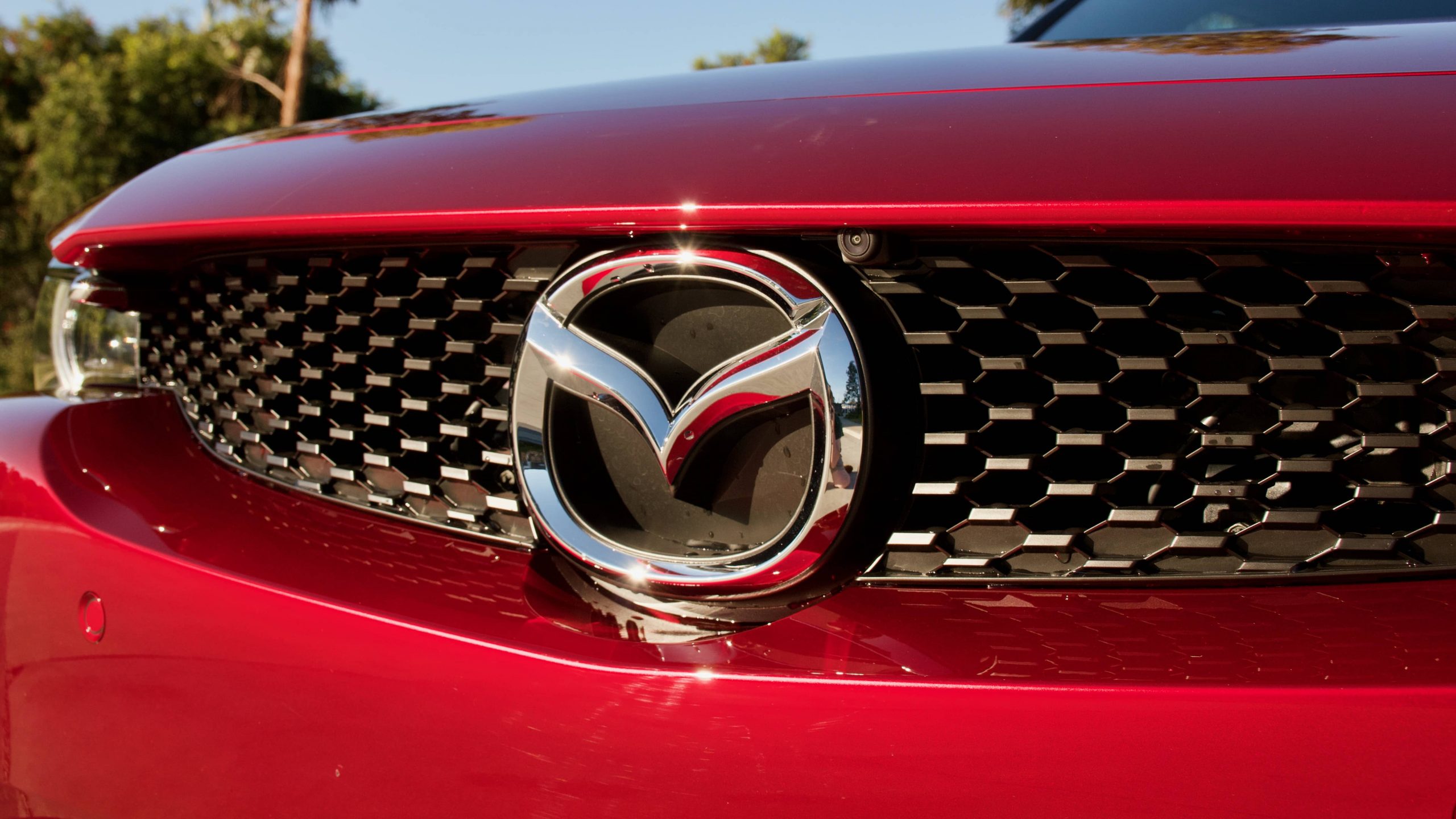
Servicing the C-HR is significantly cheaper than the MX-30 at just $925 over five years ($185 each year), and the Arkana costs $2,385 ($477 each service), though it has massive 30,000km service intervals – three times that of the Mazda. Both Toyota and Renault offer five year/unlimited km warranties for their products – Renault gives 12 months of roadside assistance that’s renewed for 12 months with each dealership service up to five years in total. Toyota doesn’t offer any roadside assistance at all.
The 2021 Mazda MX-30 G20e Astina DiscoverAuto Rating: 7.4/10
The 2021 Mazda MX-30 G20e Astina is a genuinely interesting addition to the Mazda lineup that is sure to win buyers thanks to its distinctive styling, high quality interior and general uniqueness – which other new car offers freestyle doors, for example? The MX-30 also offers a huge list of standard equipment, as we’ve come to expect from Mazda in Australia, and it drives well too.
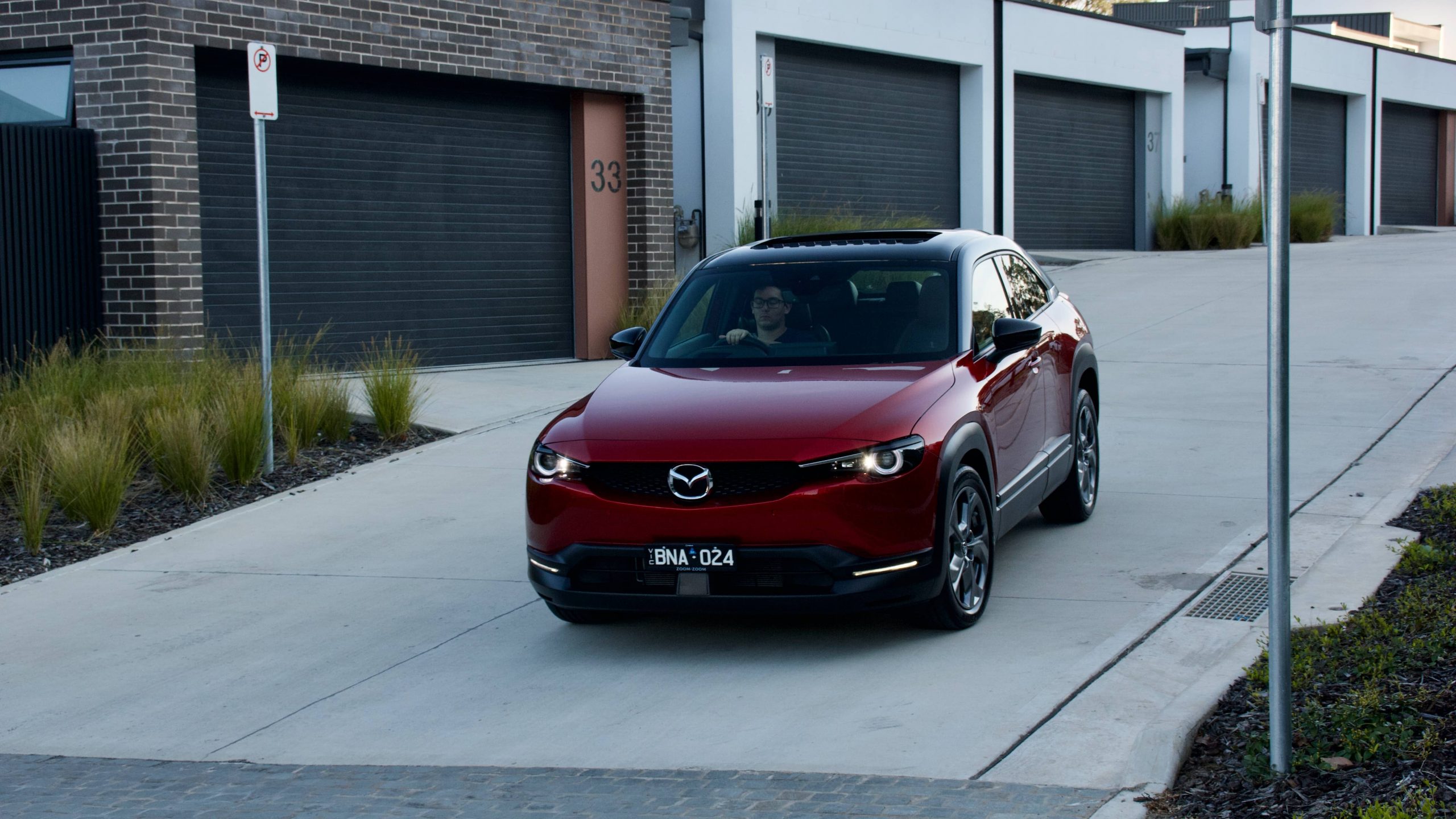
But it’s not perfect. It’s not cheap to buy – cheaper MX-30 models are better value for money – at more than $46,000 drive away, the mild-hybrid drivetrain is not efficient or particularly strong, it’s not especially practical with a small back seat and boot and its 10,000km service intervals are short. Had it been fitted with the new SkyActiv-X engine, we think the MX-30 would be a stronger performer, but as it stands, we think the CX-30 is a better option if one is after a Mazda small SUV and a Toyota C-HR is better if one wants hybrid fuel economy.
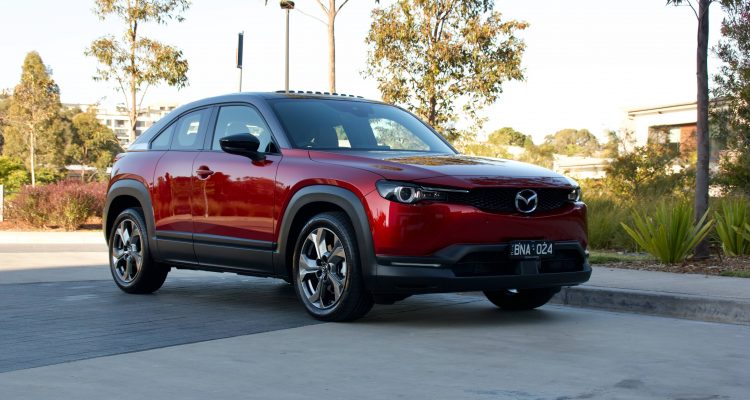
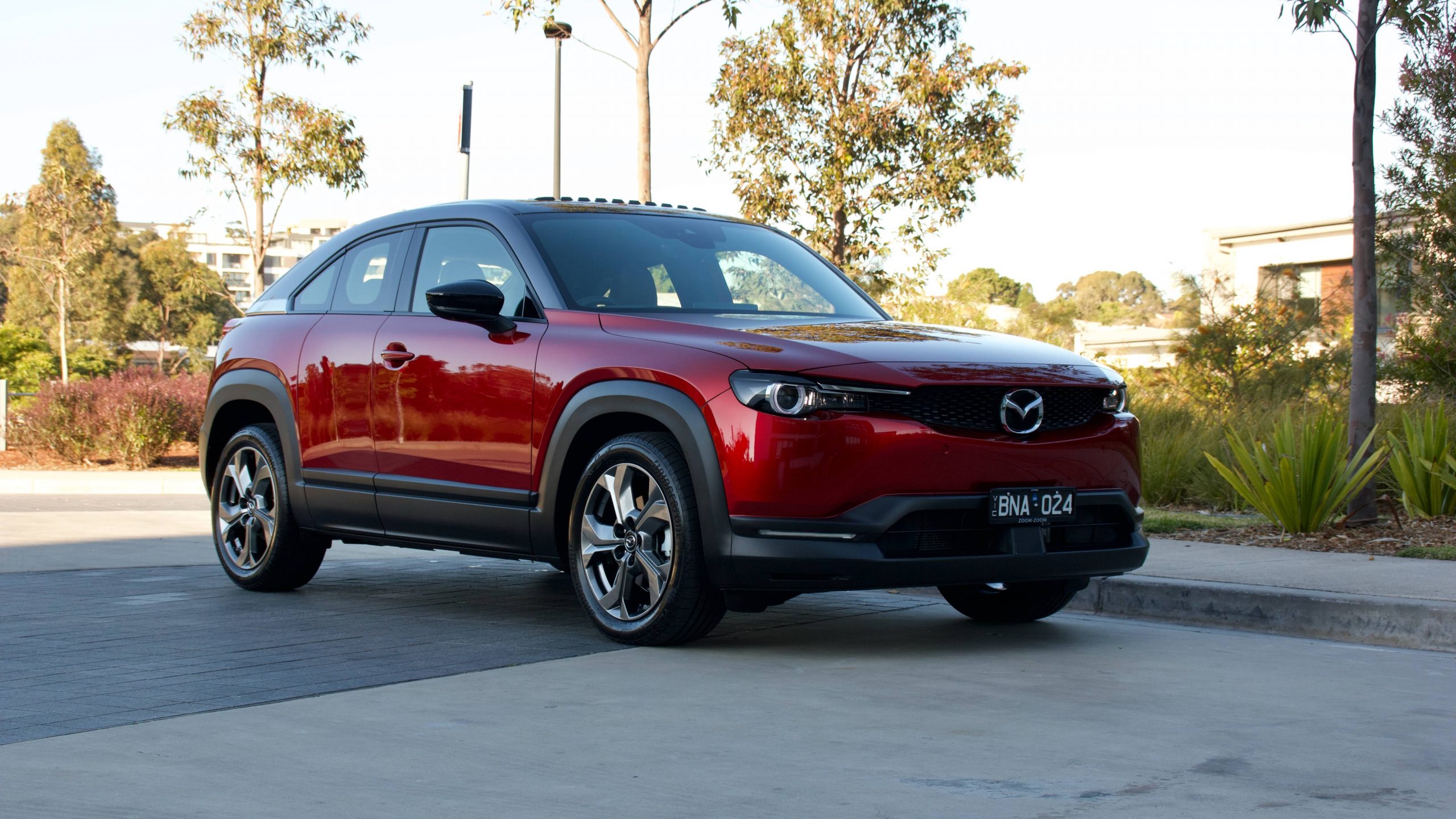
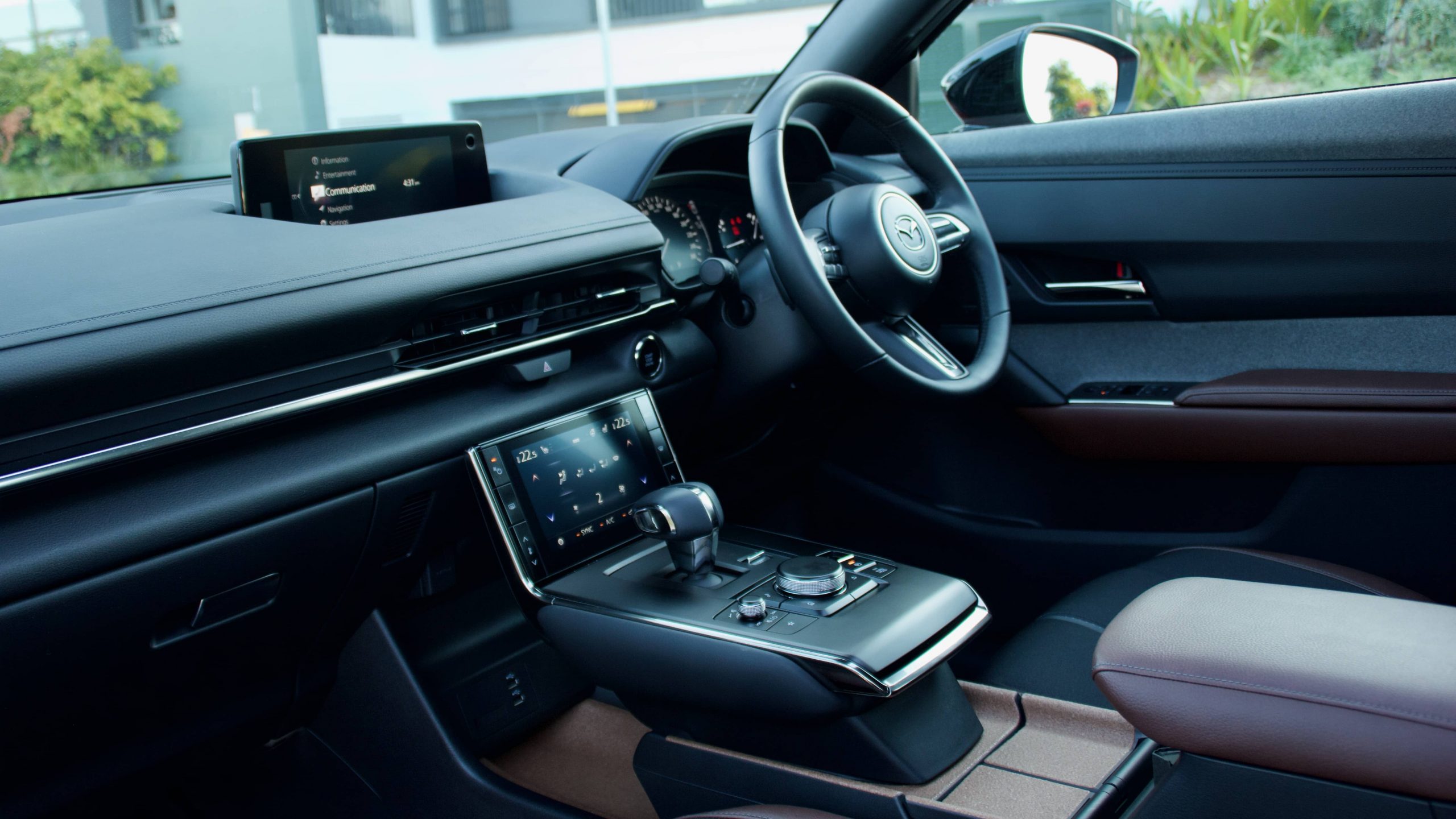
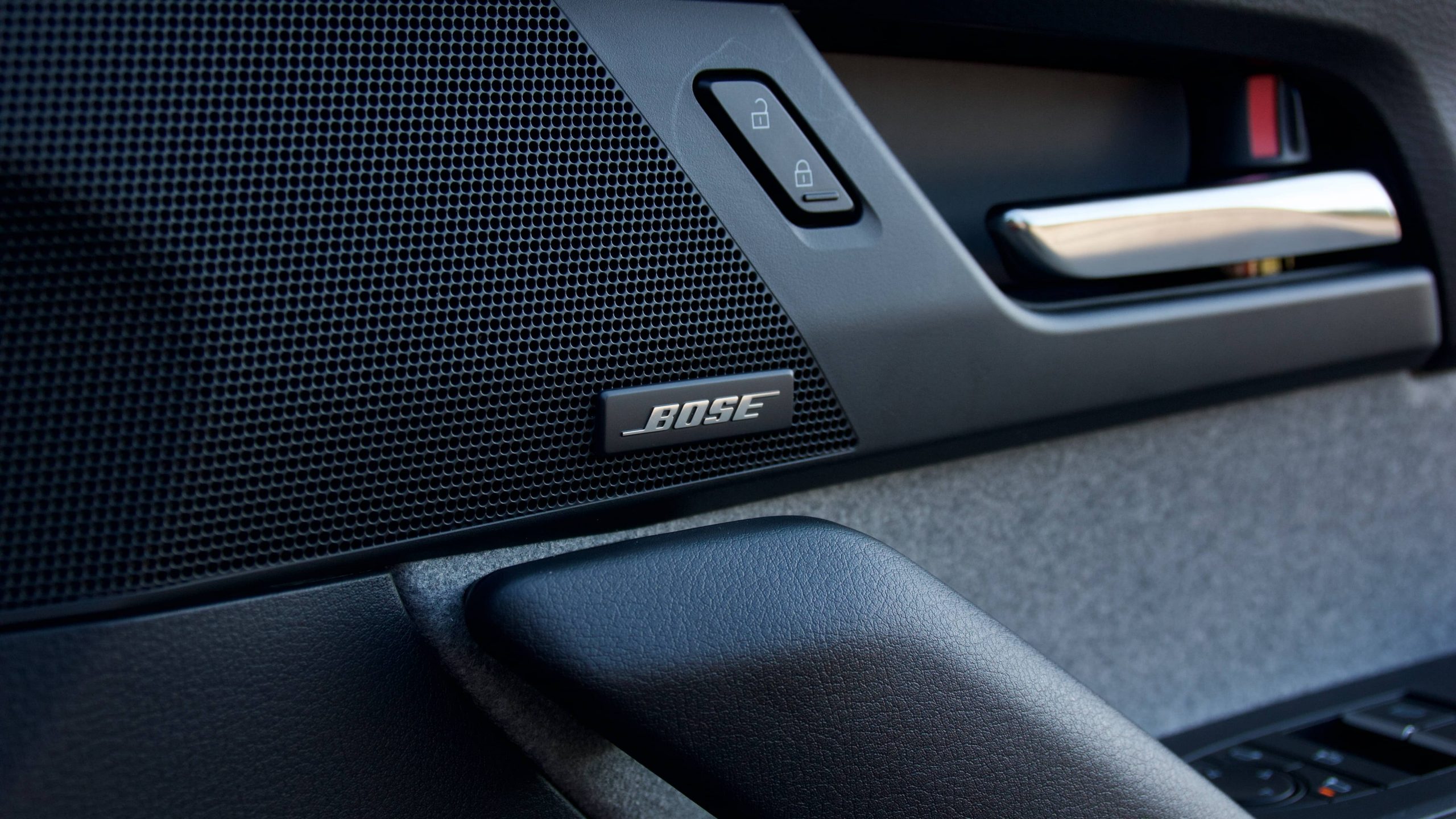
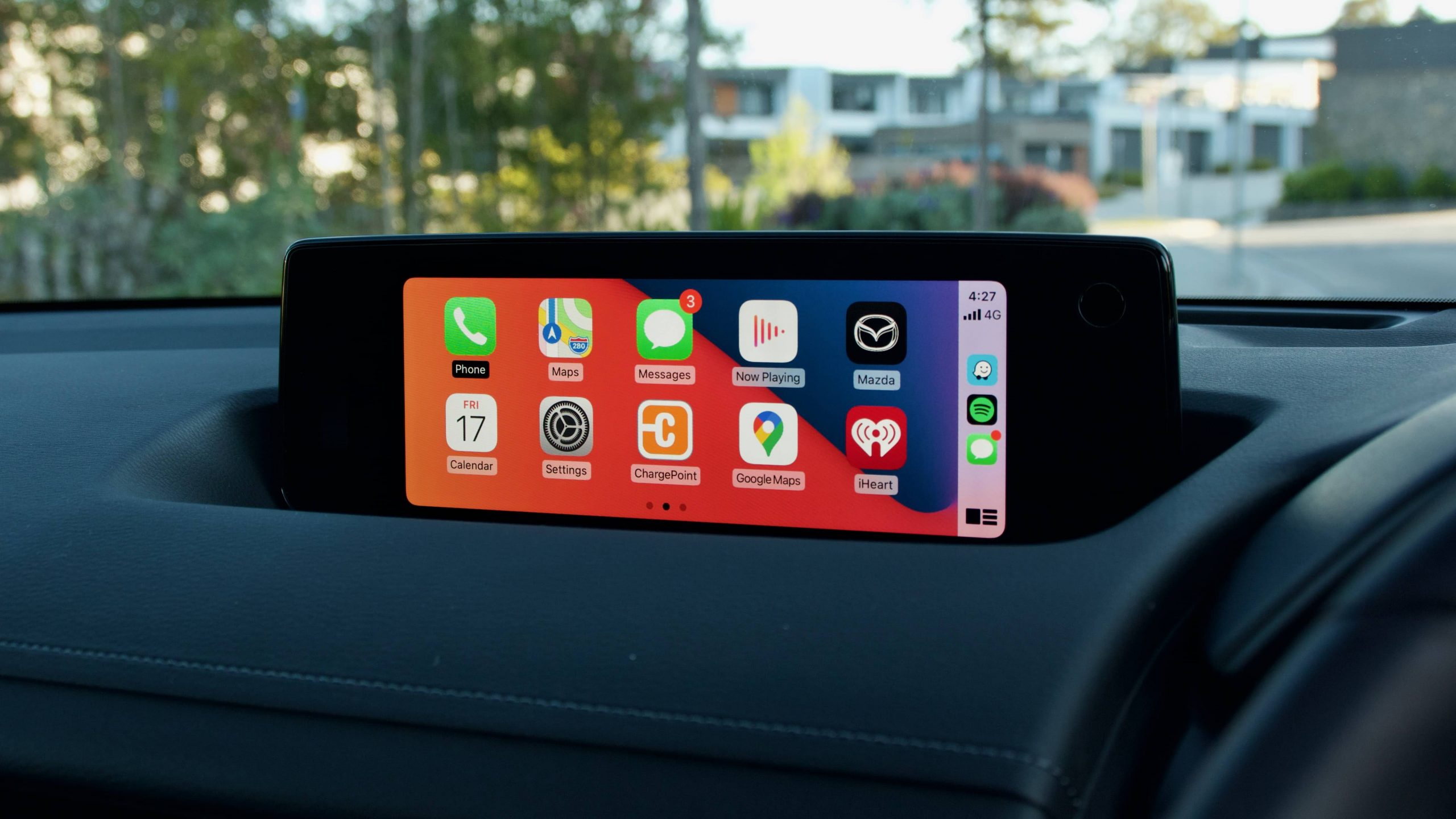
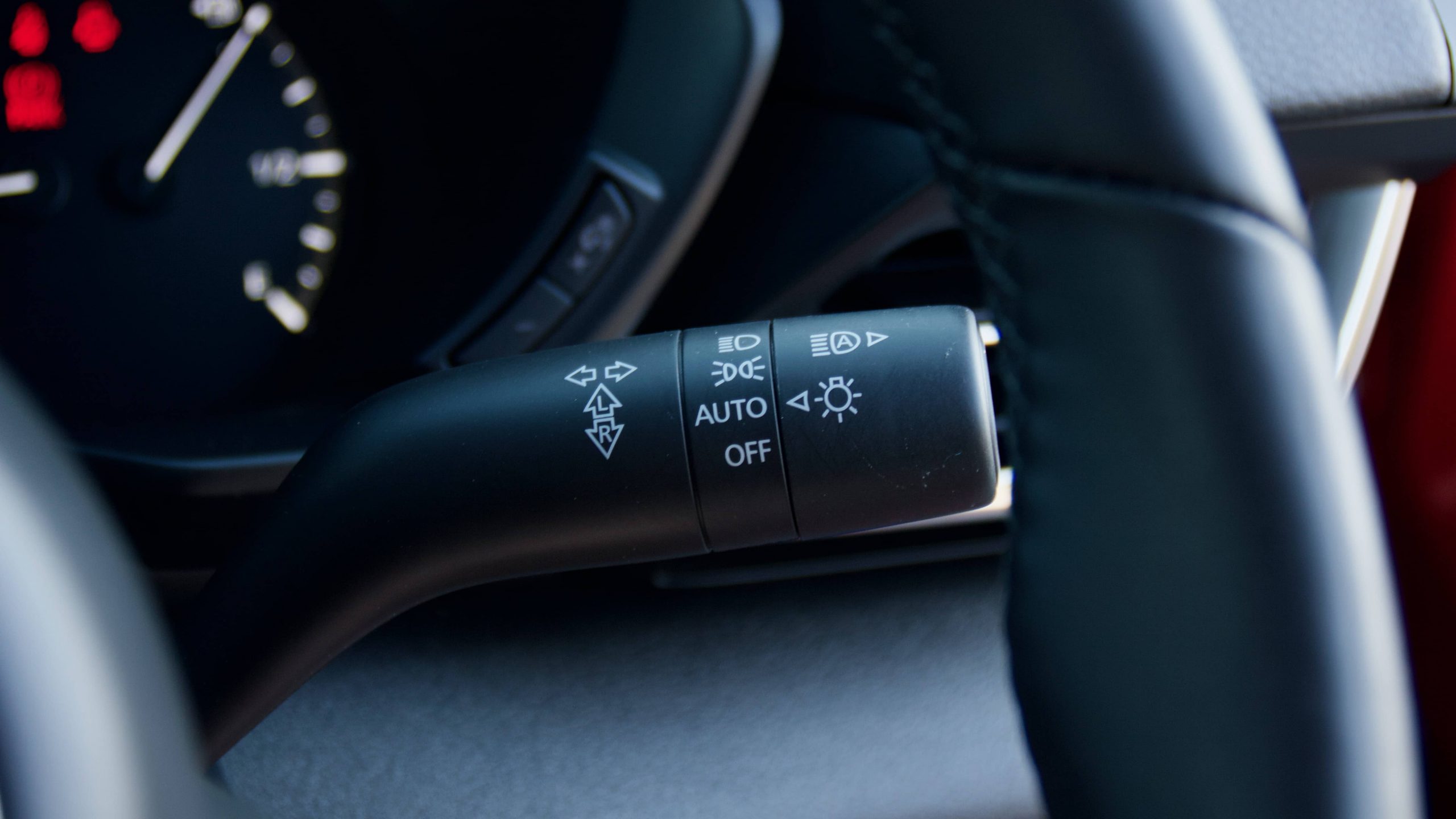
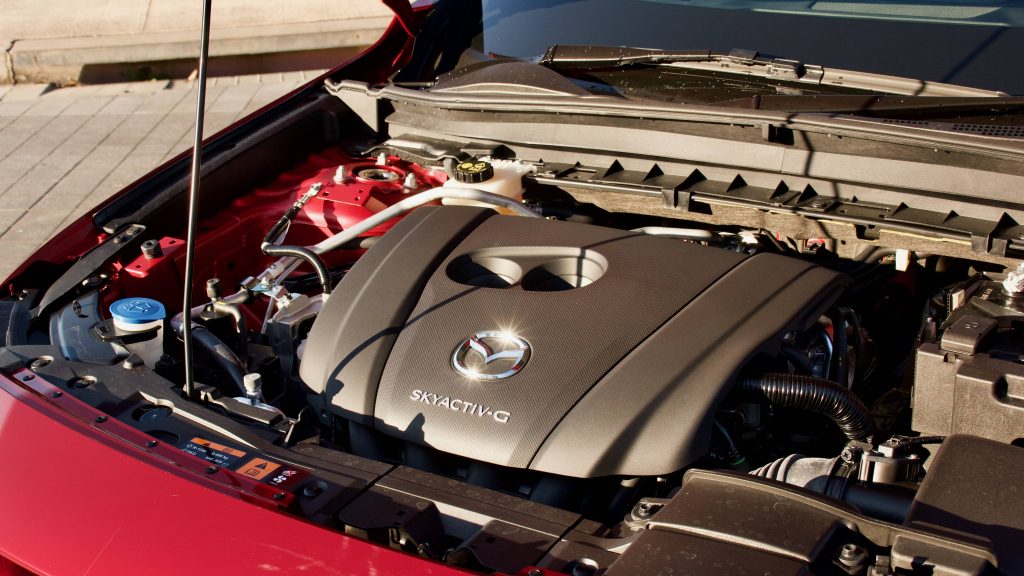
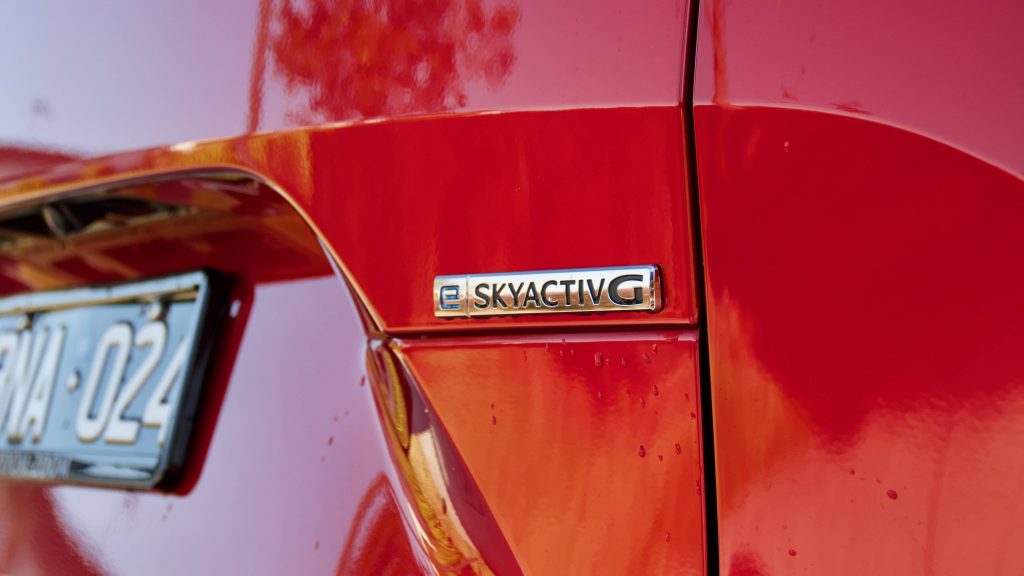
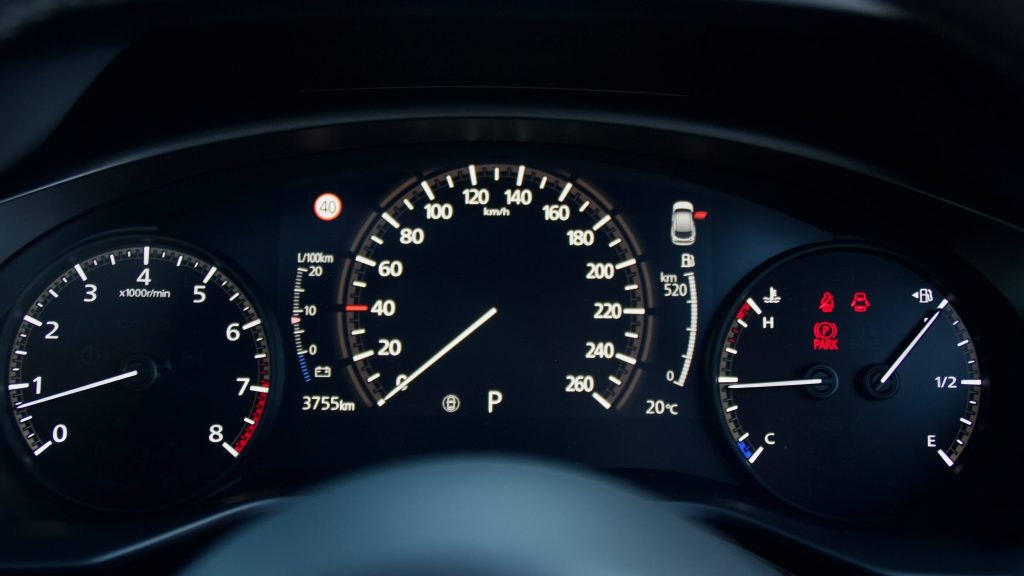
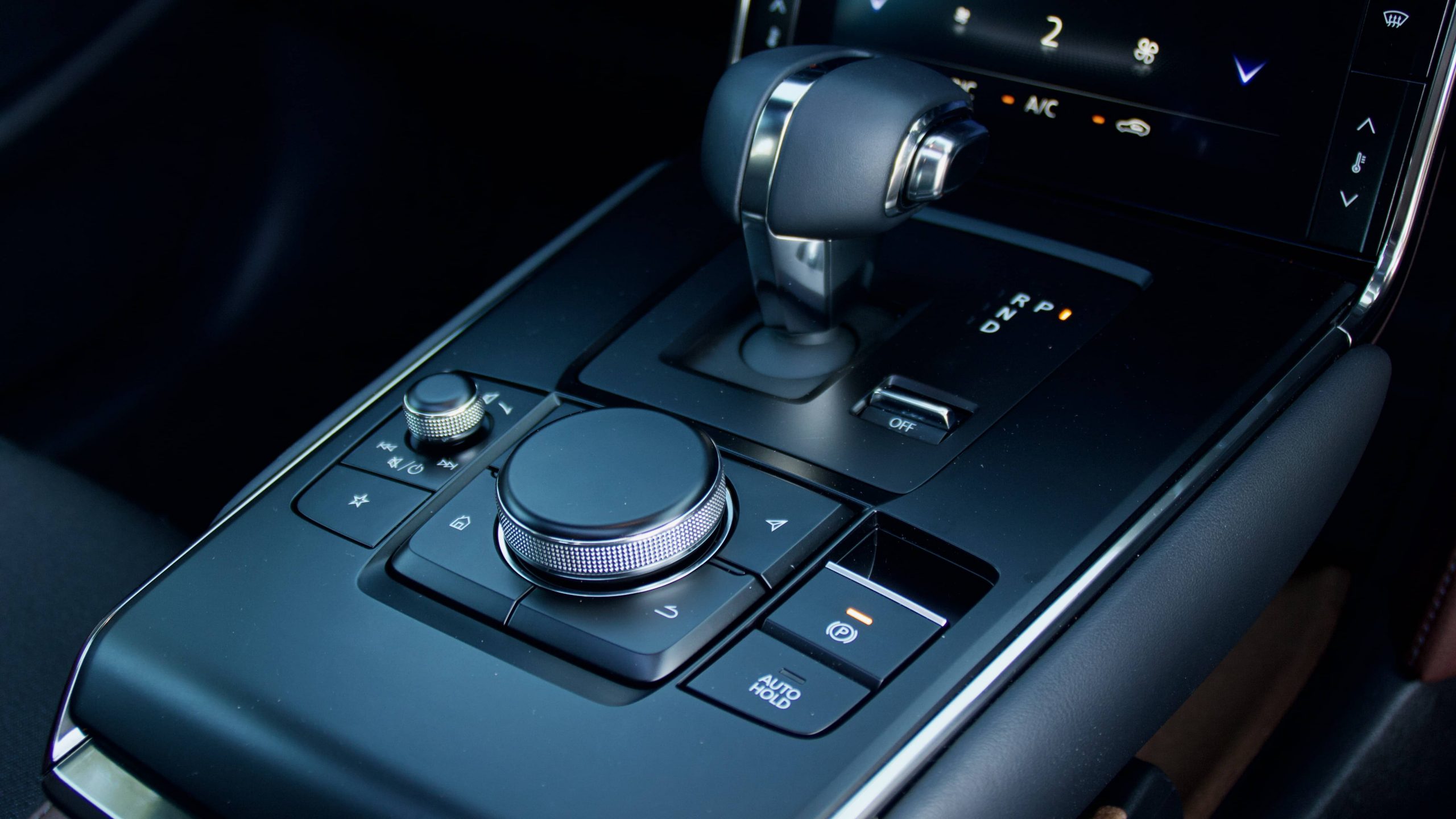
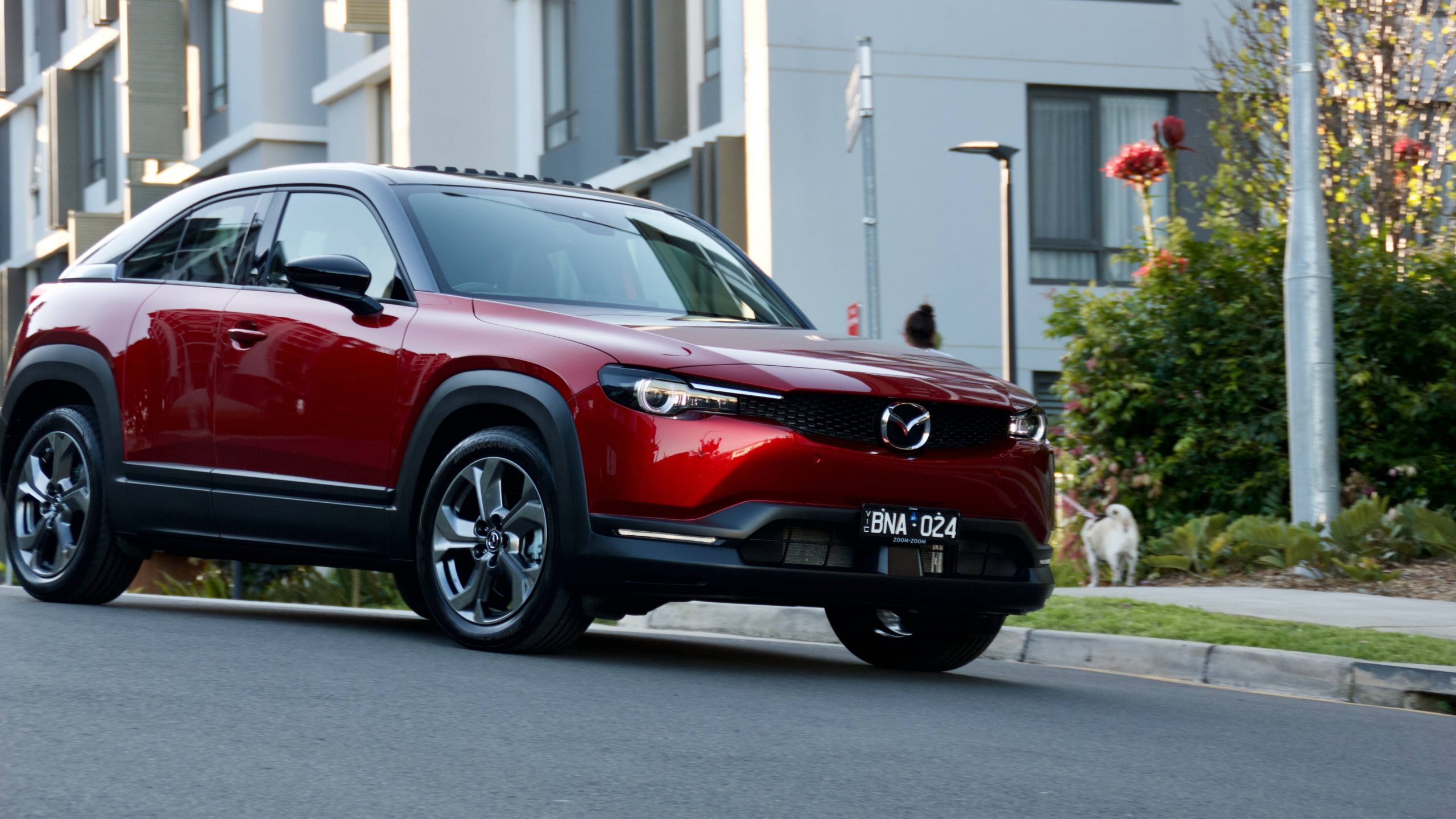
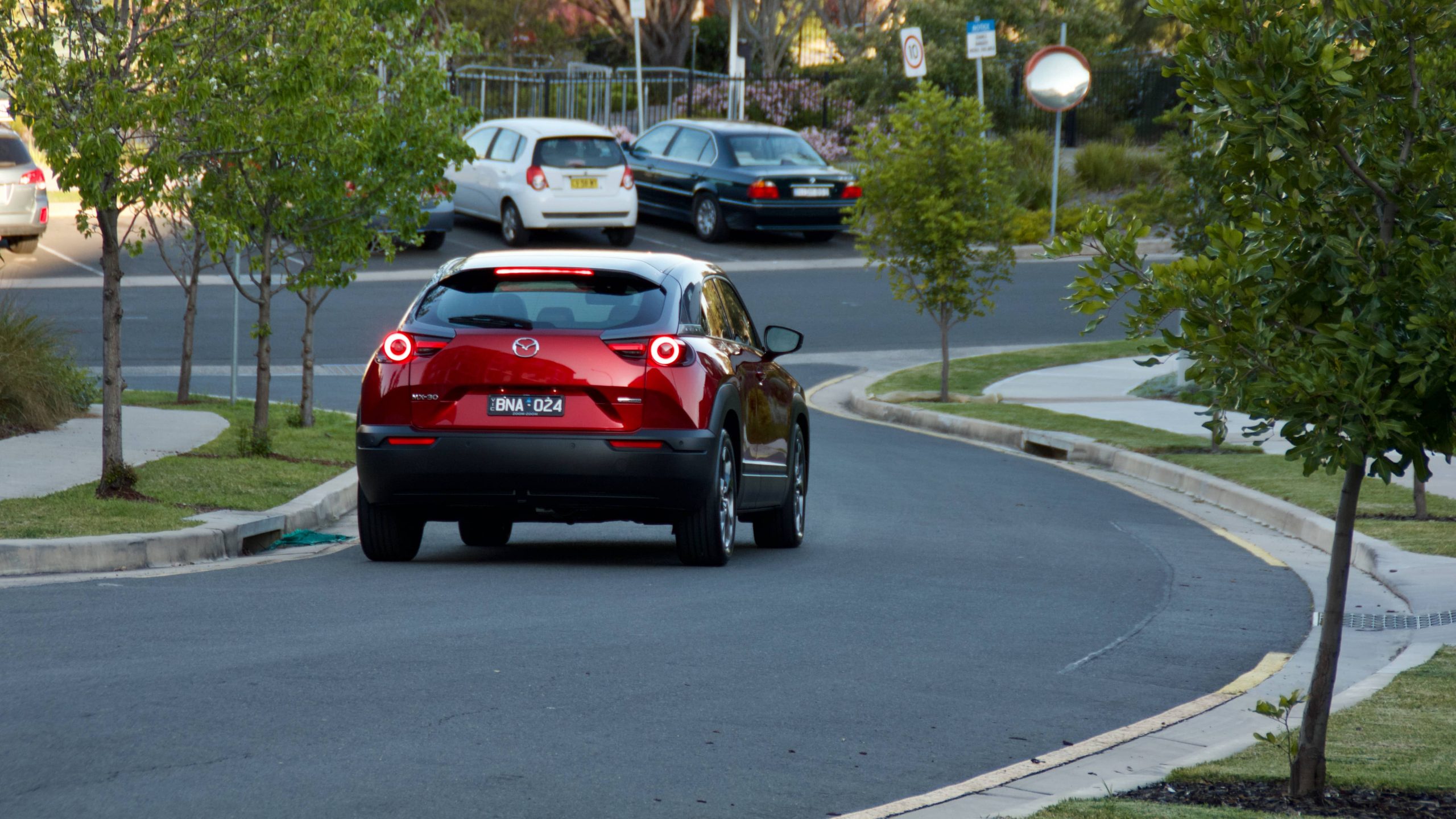
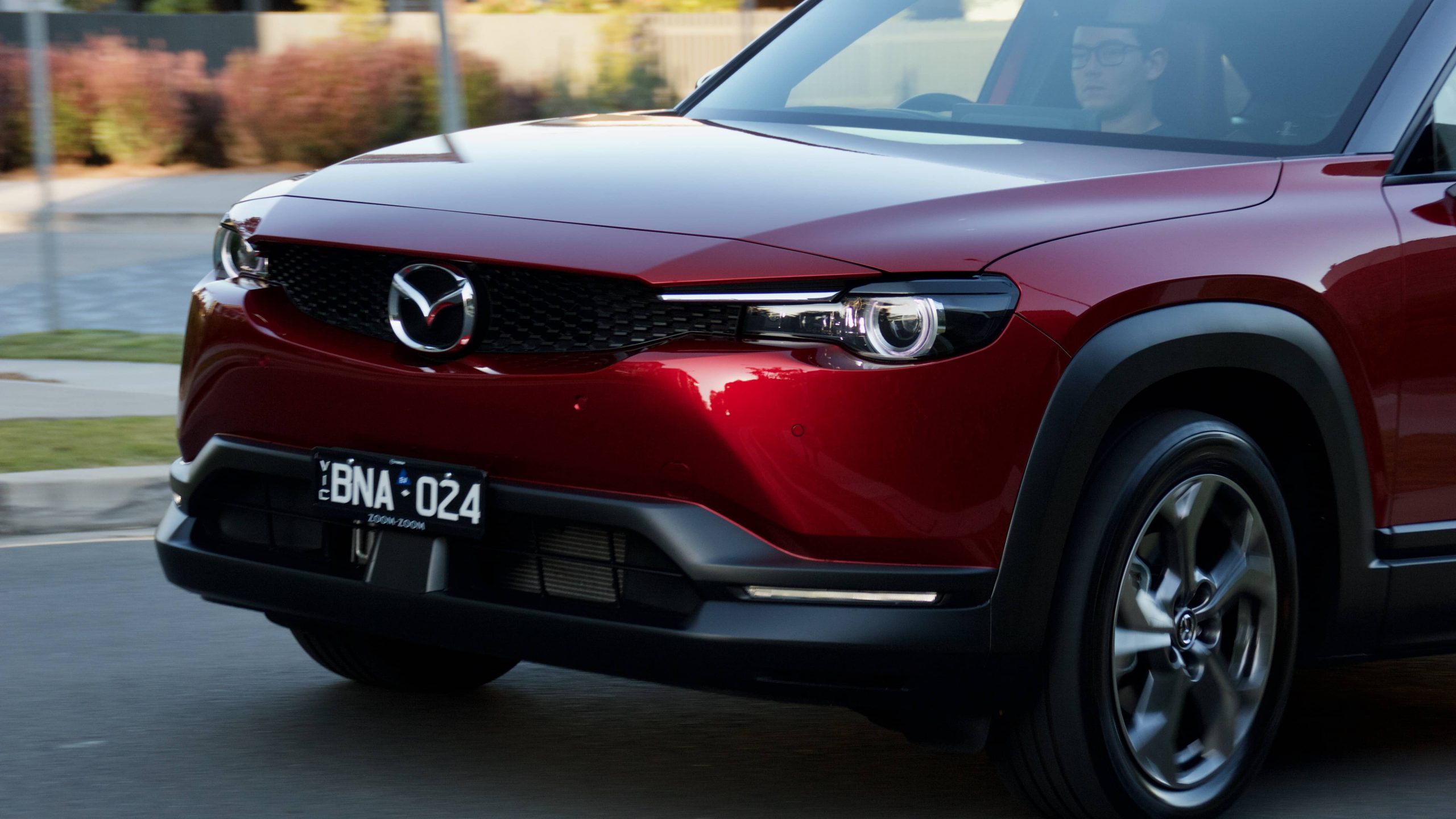
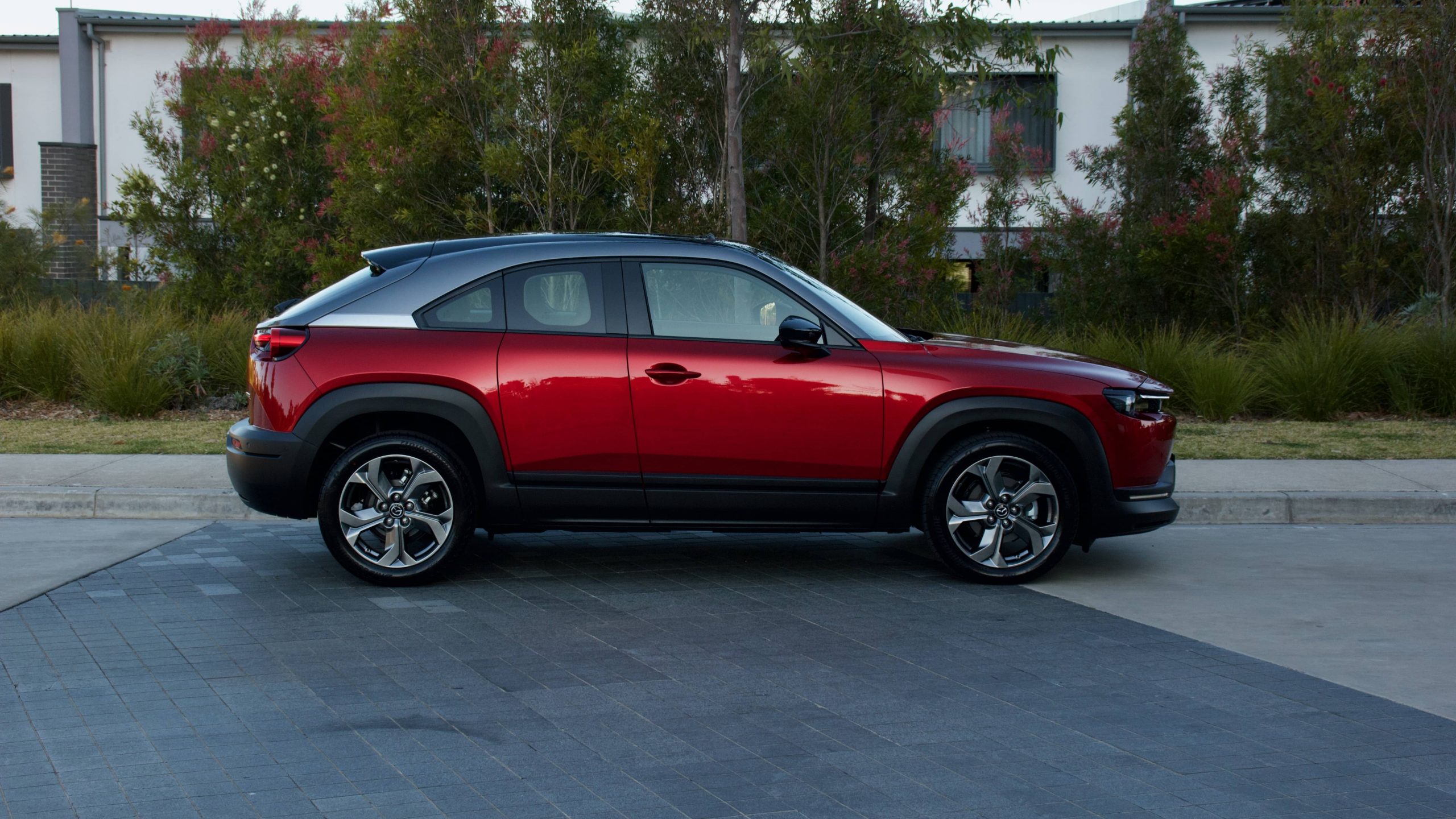
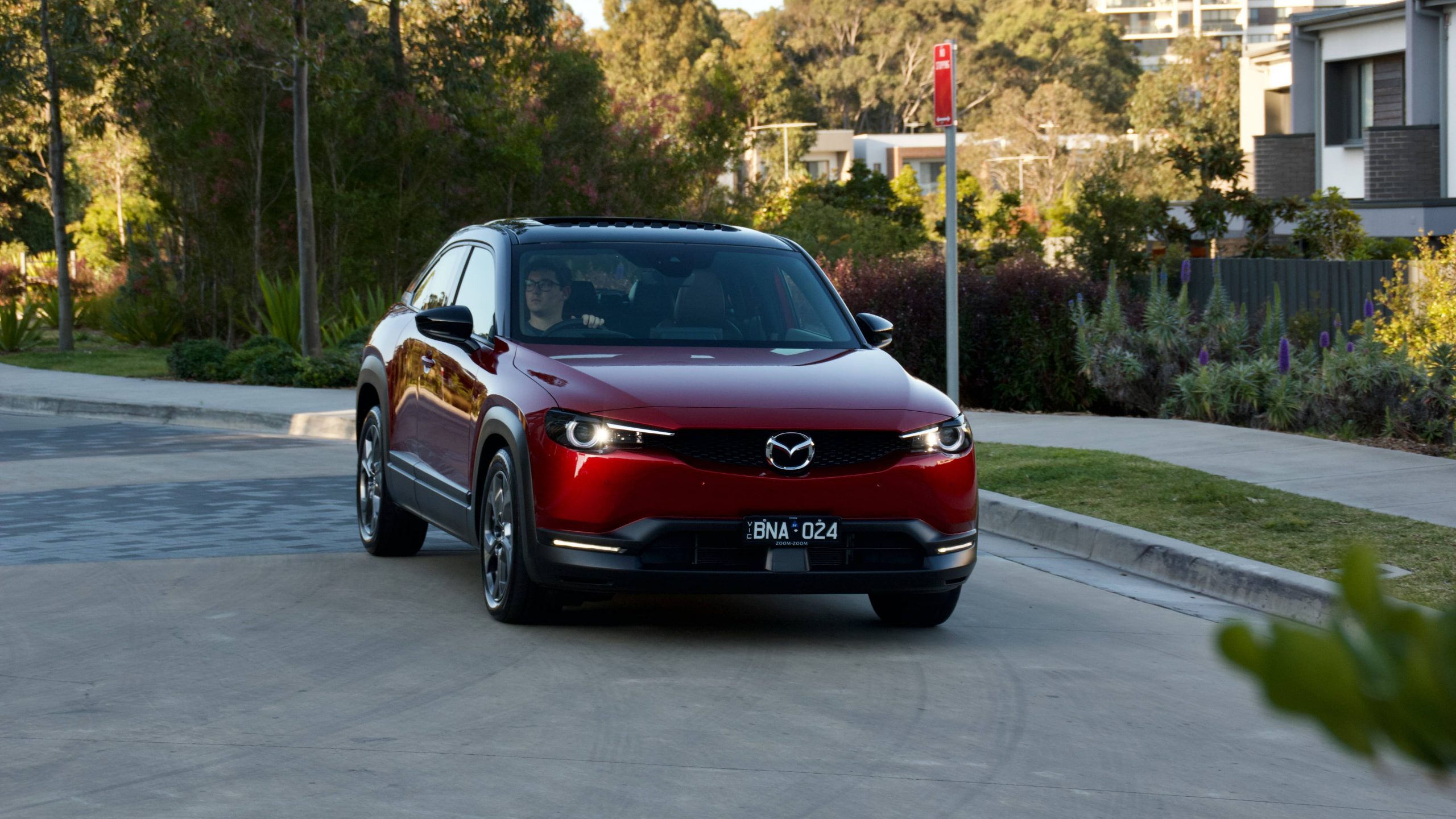
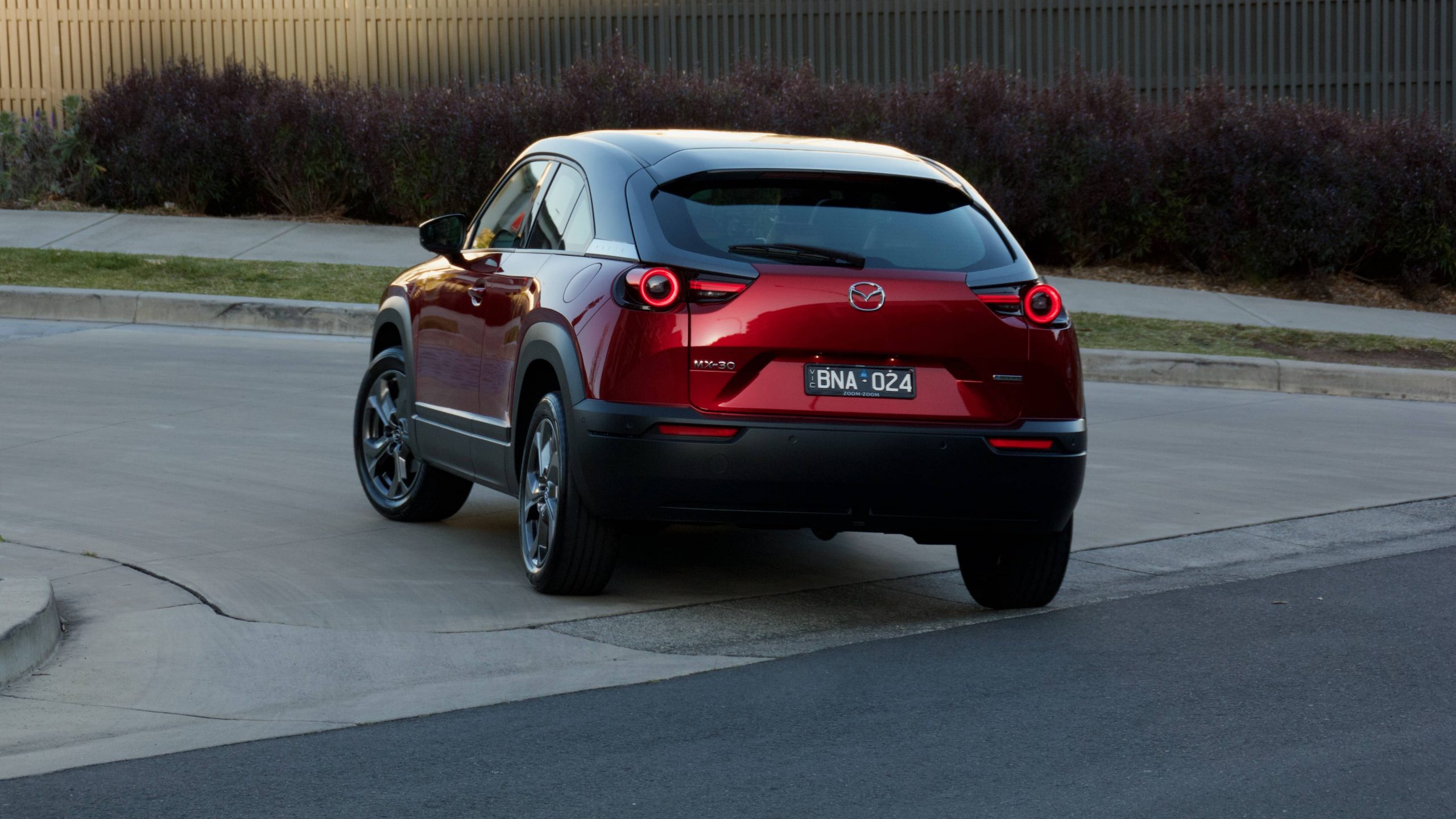
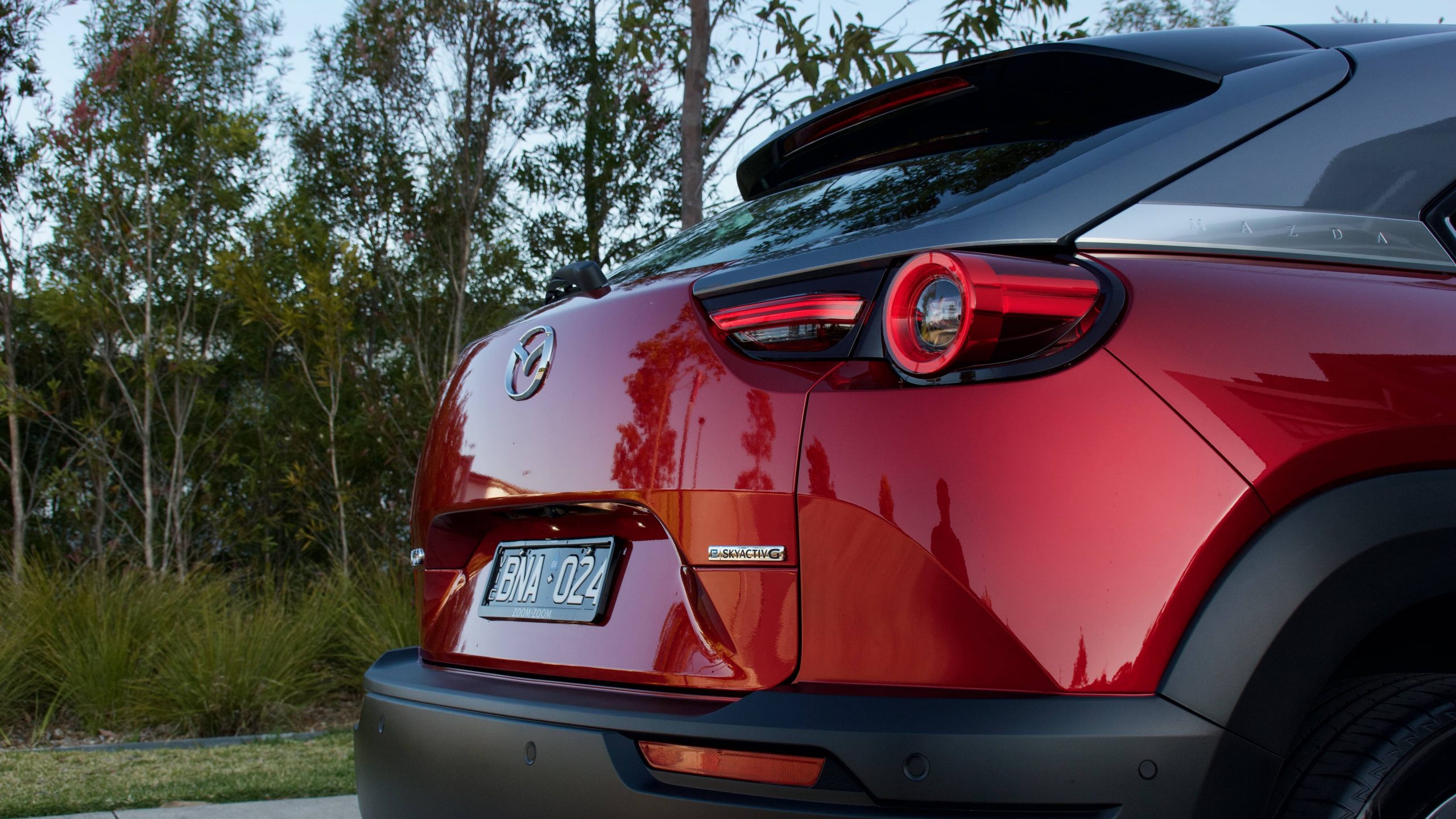
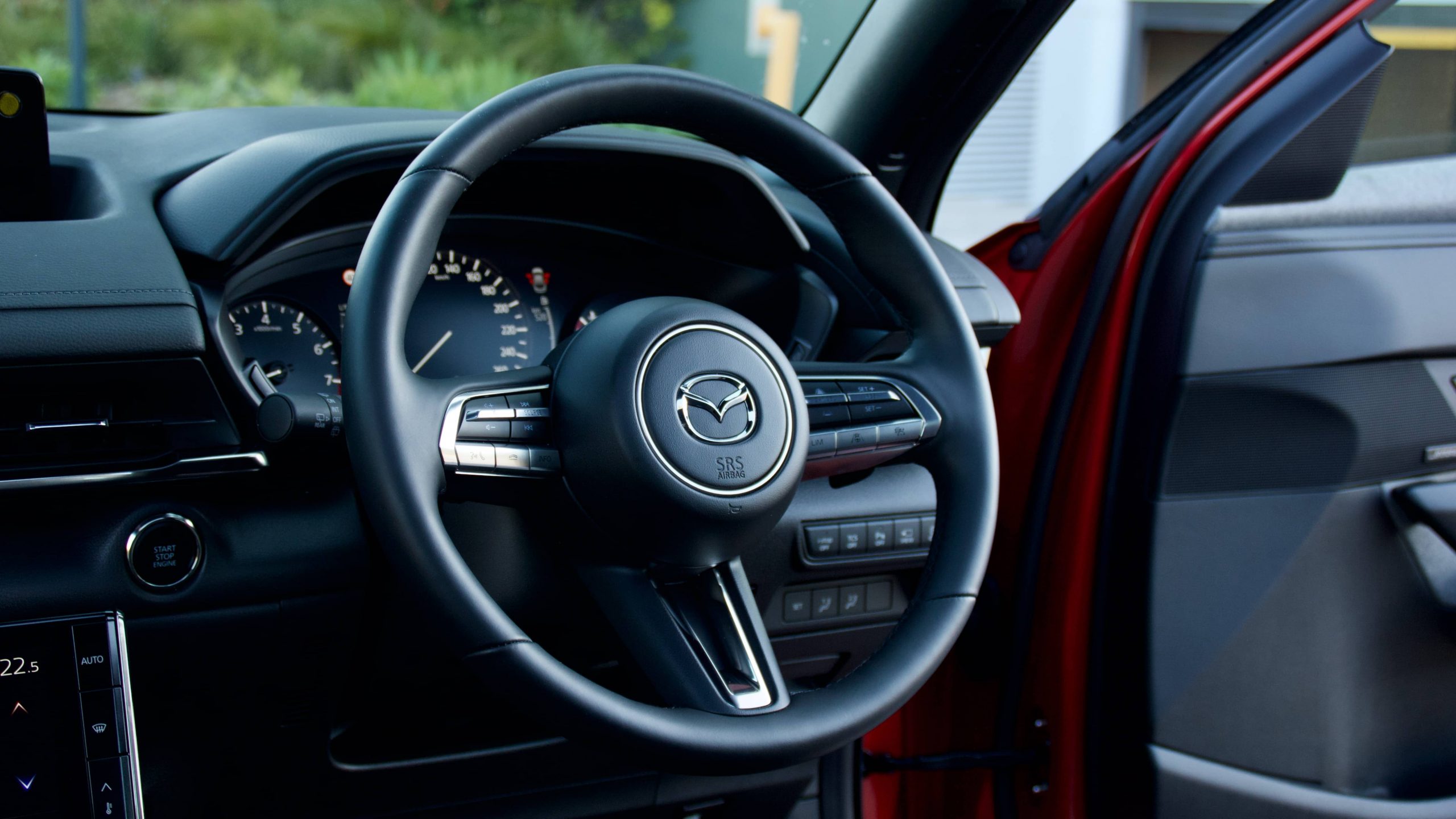
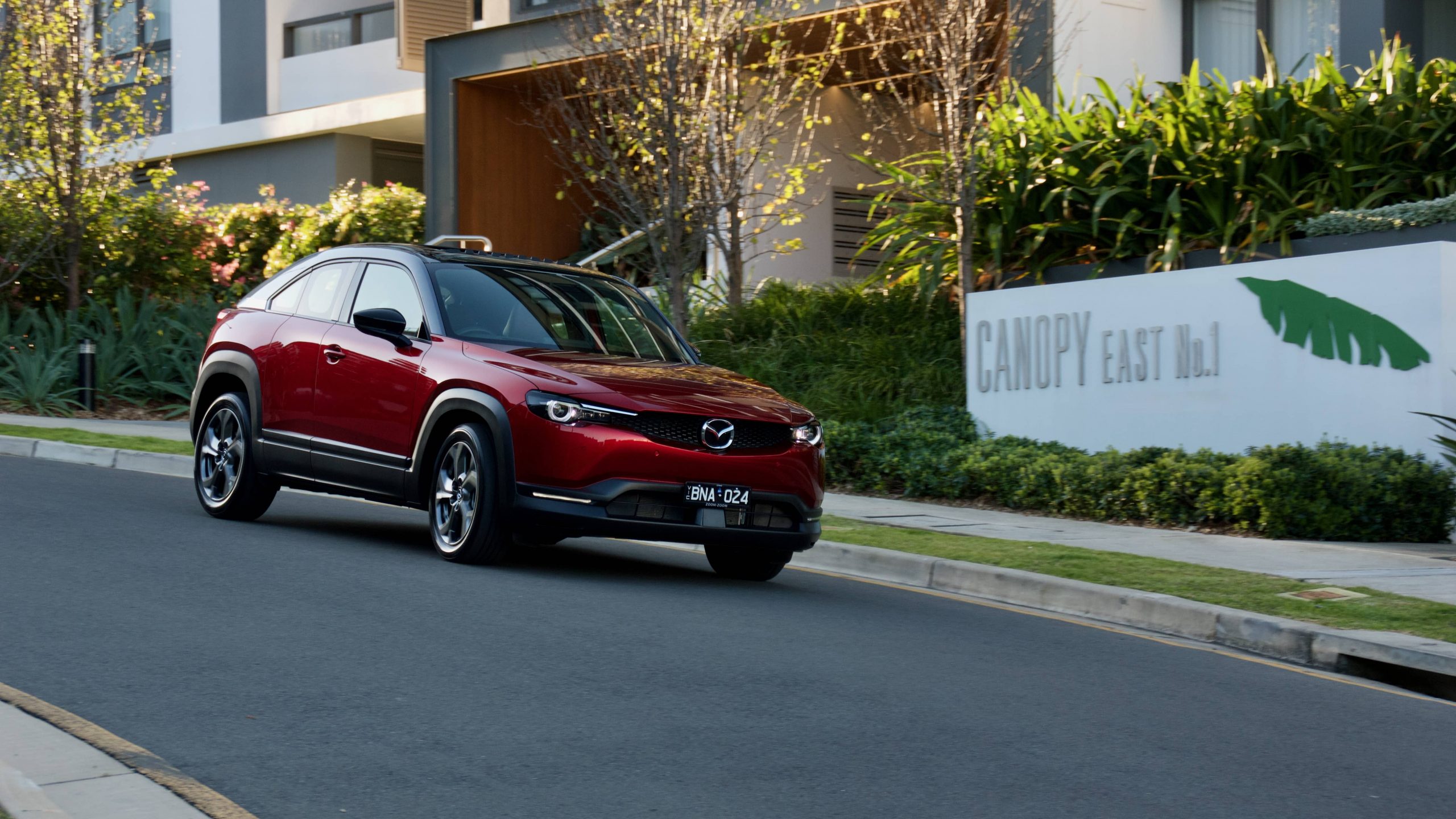
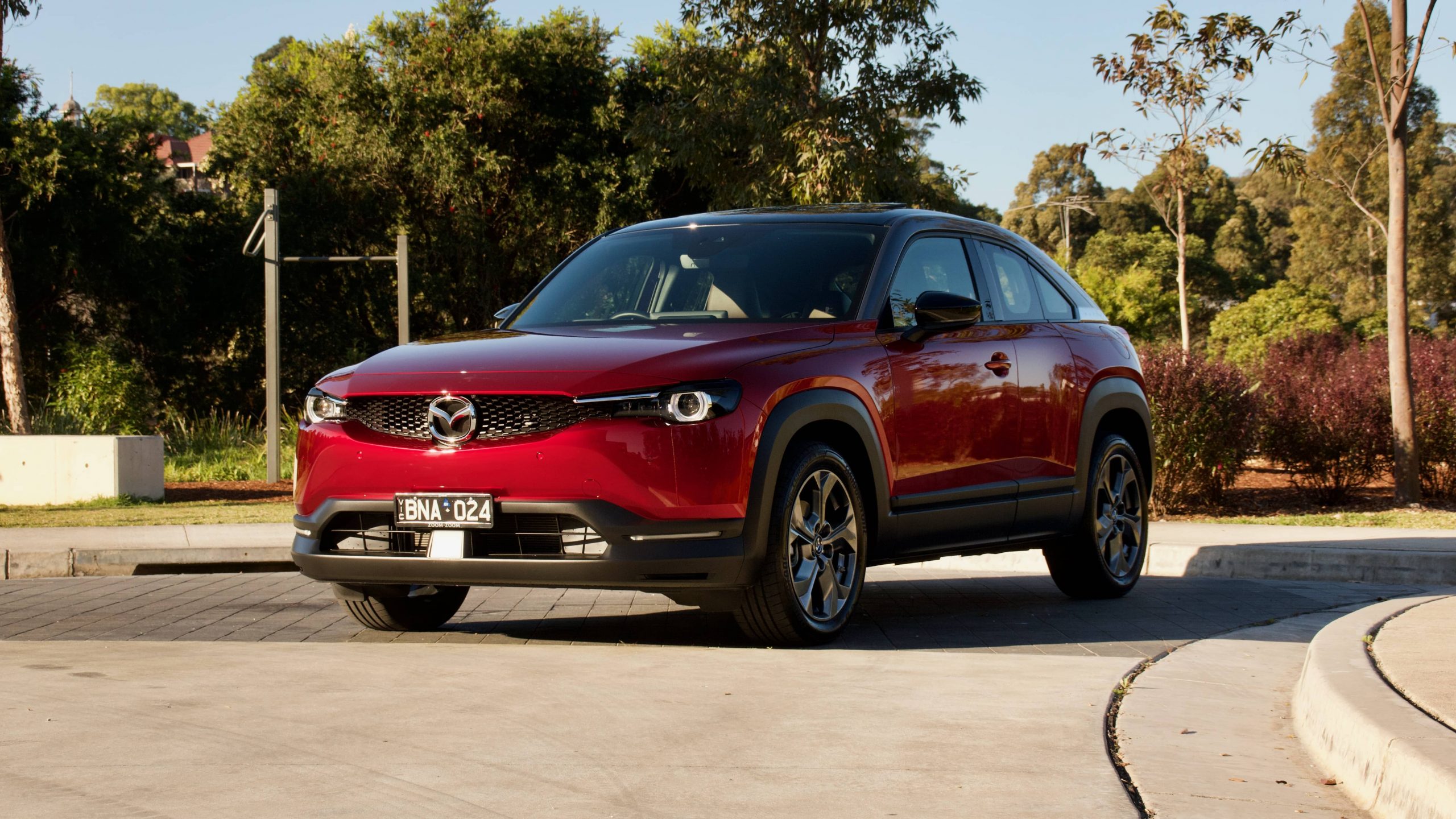
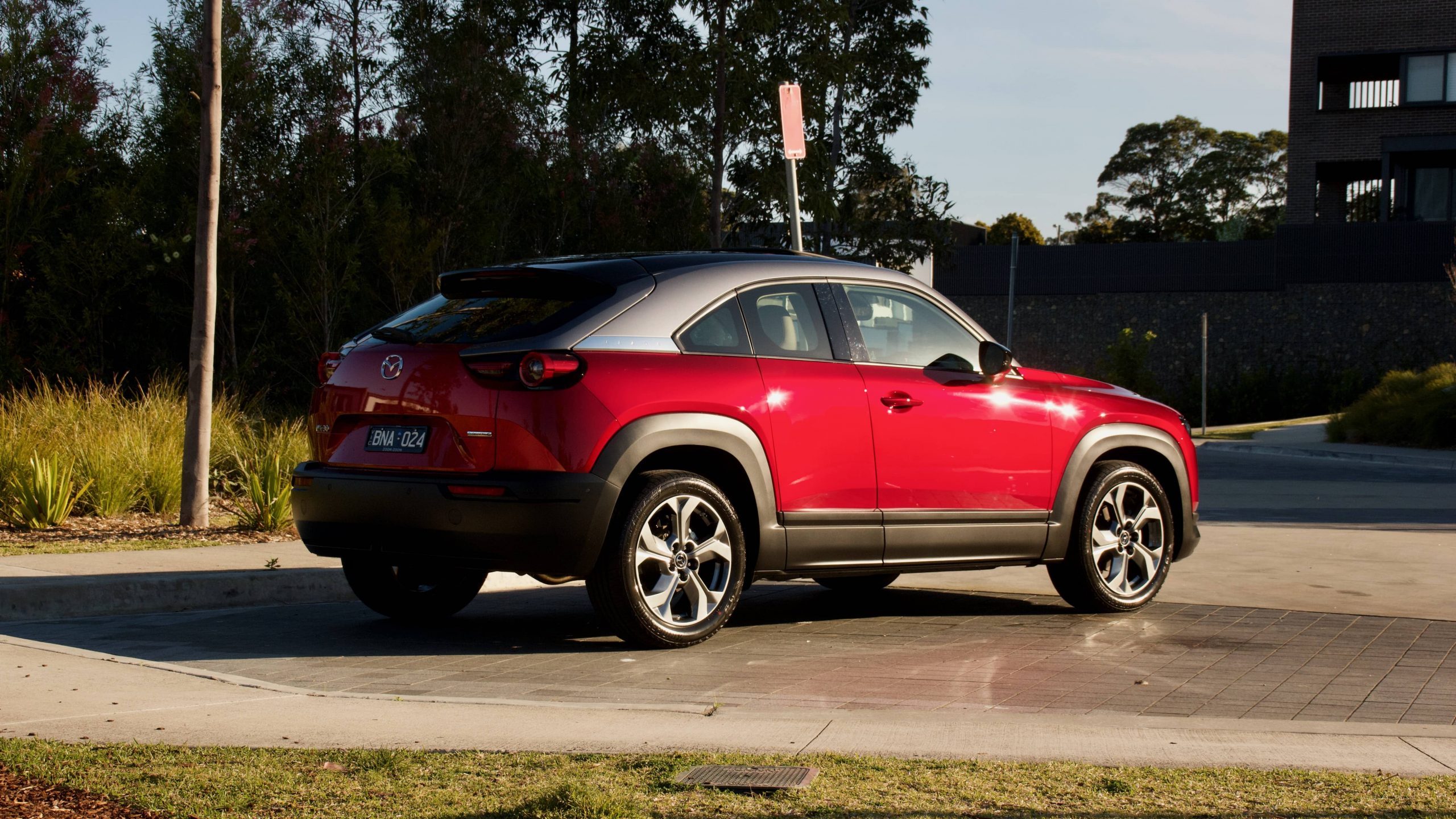
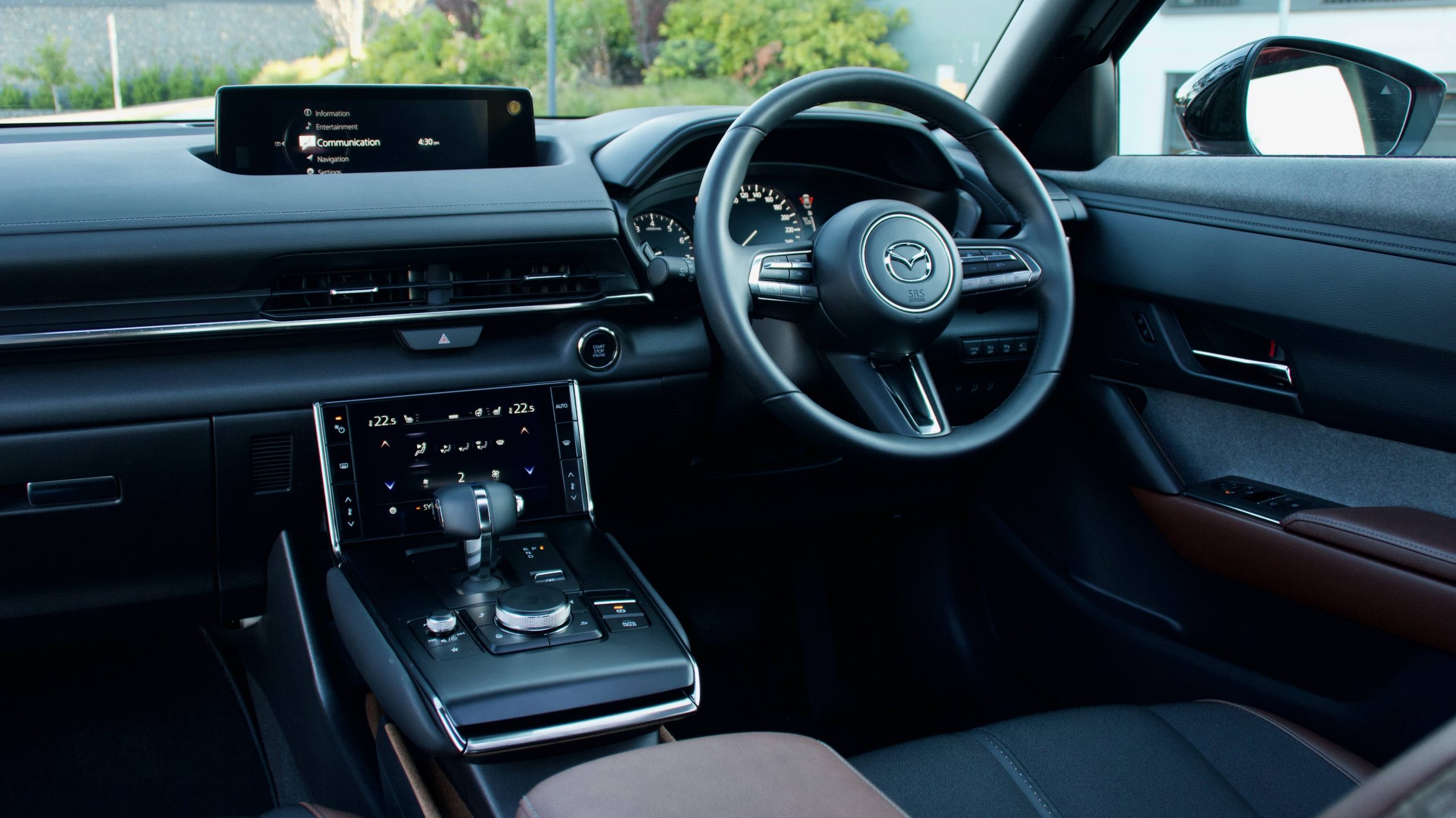
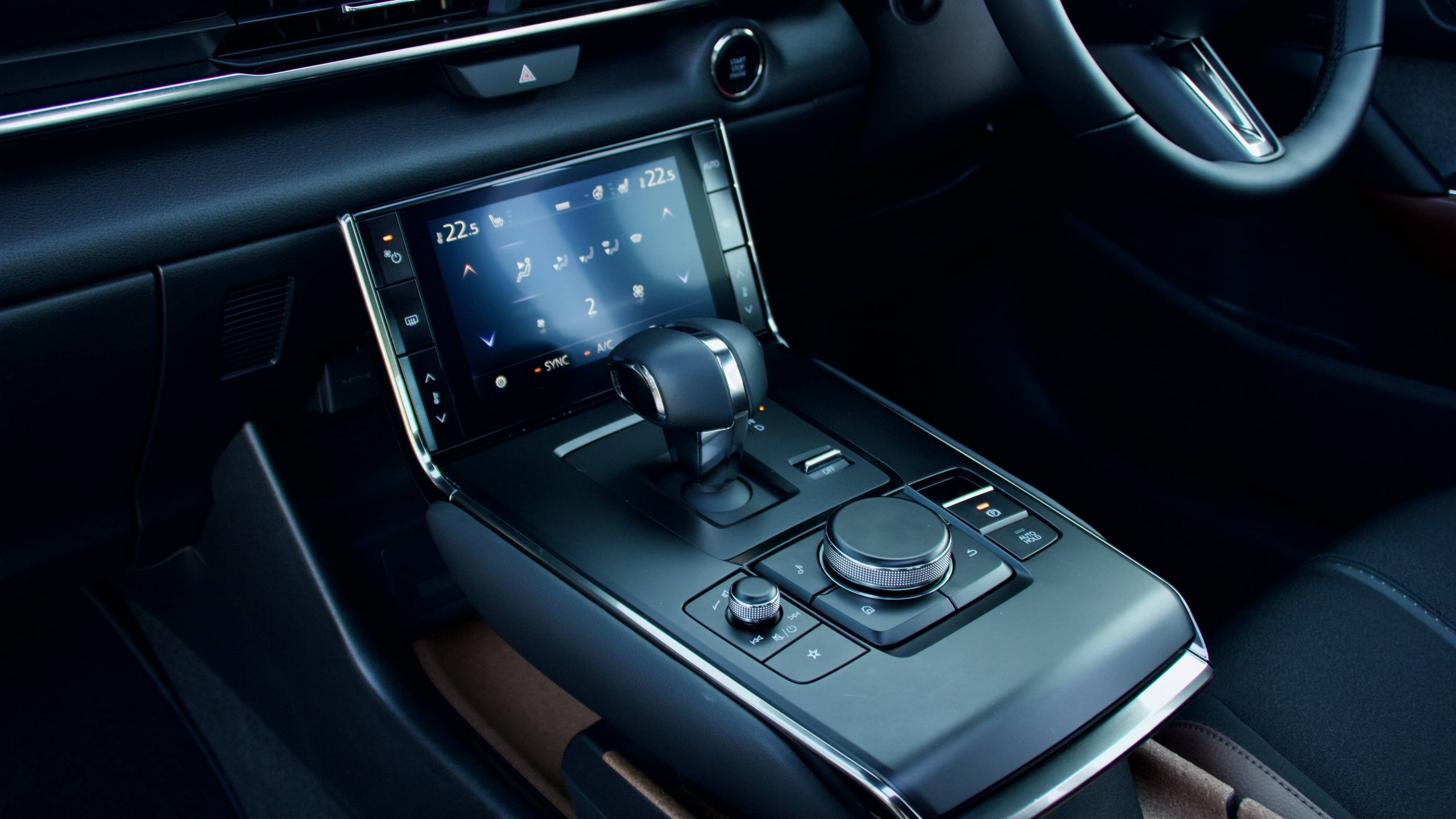
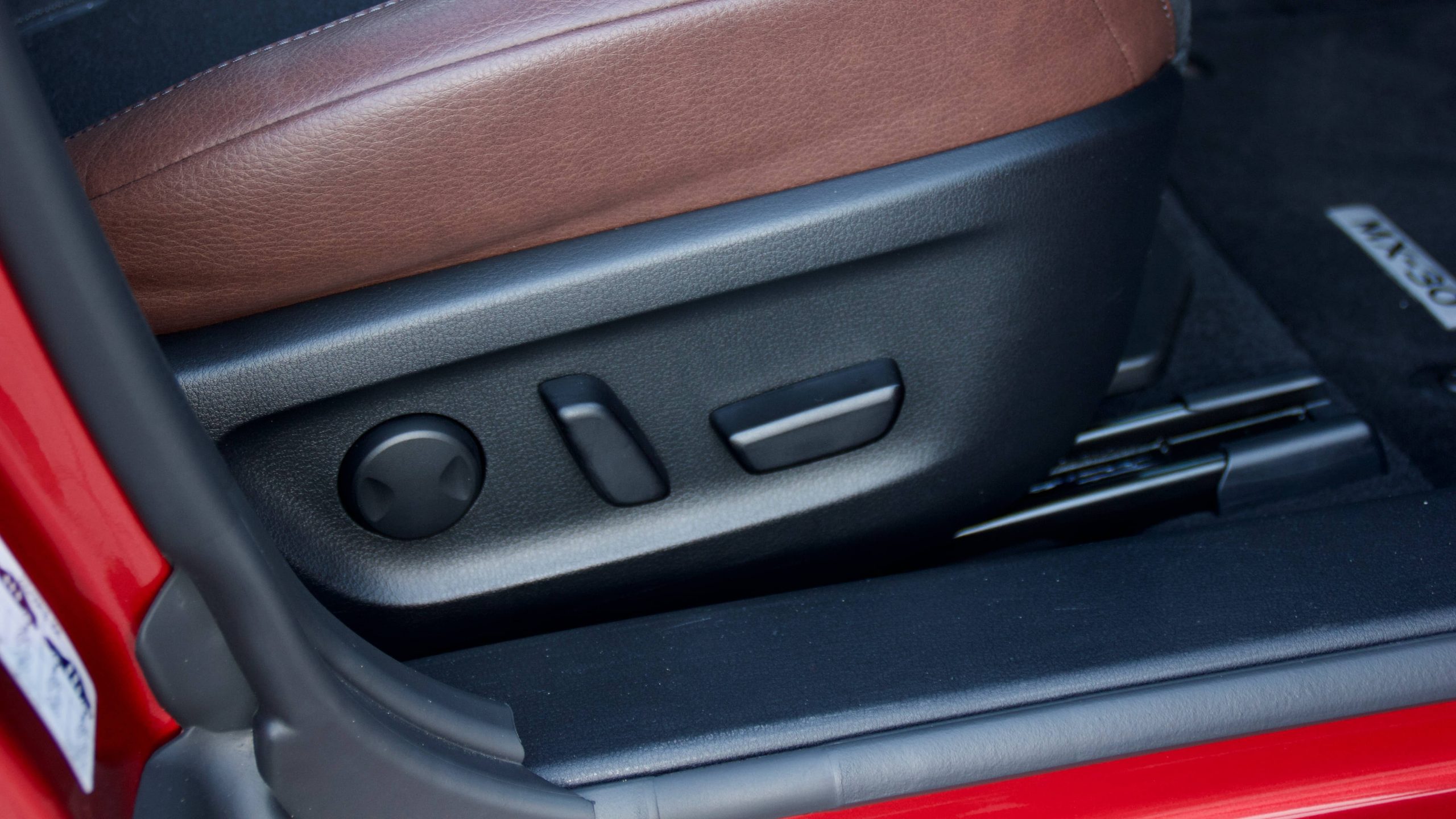
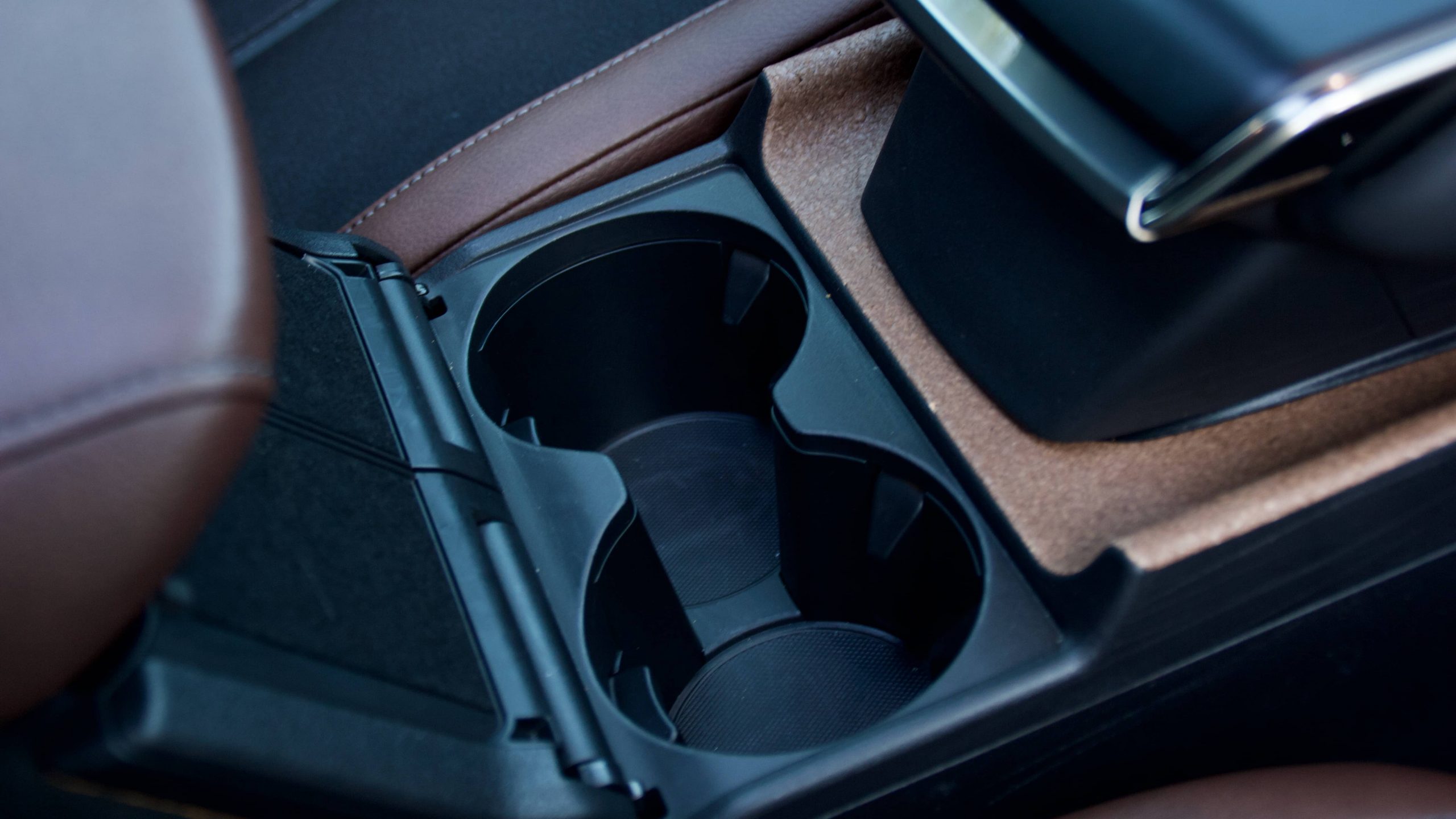
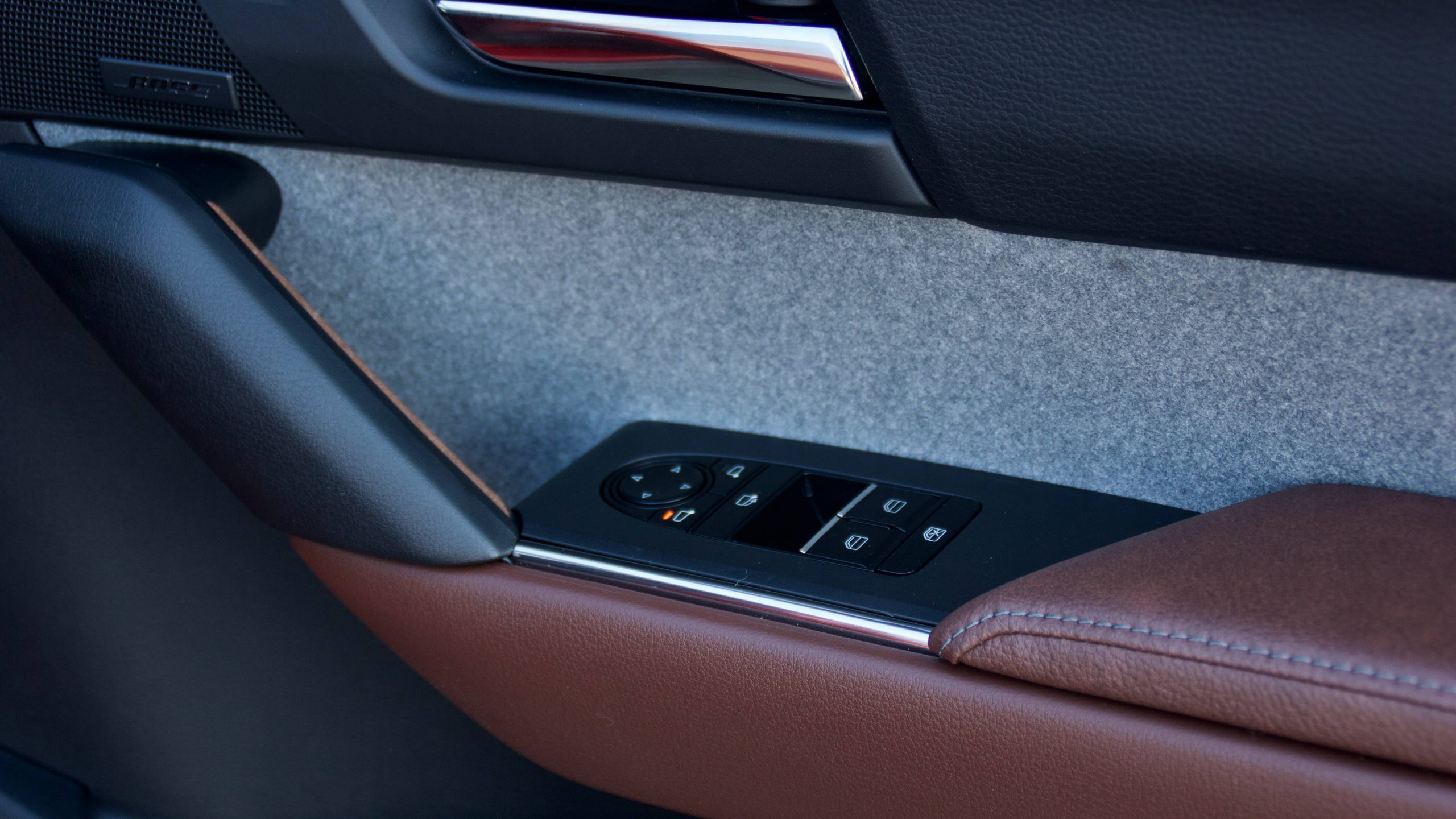
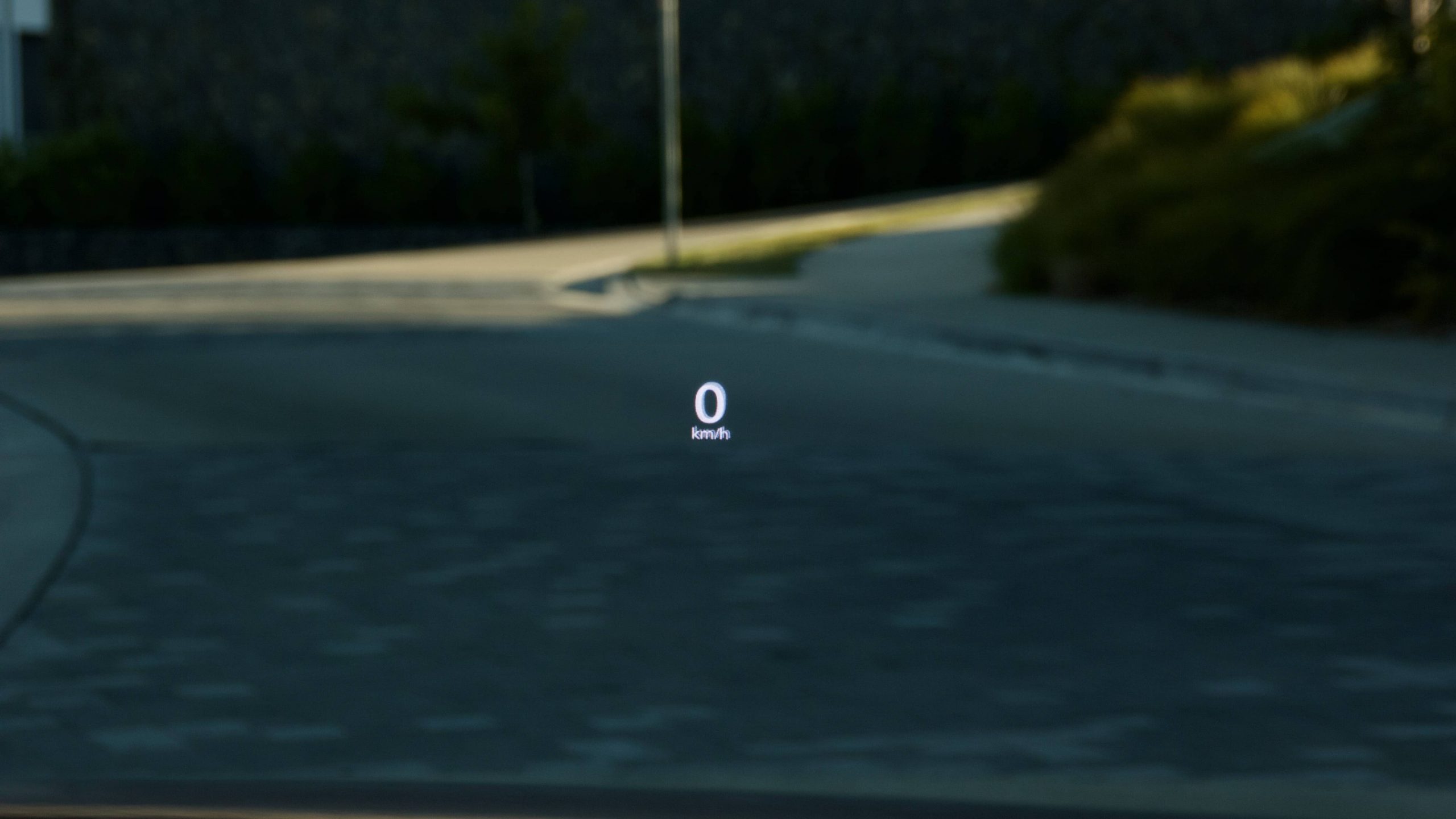
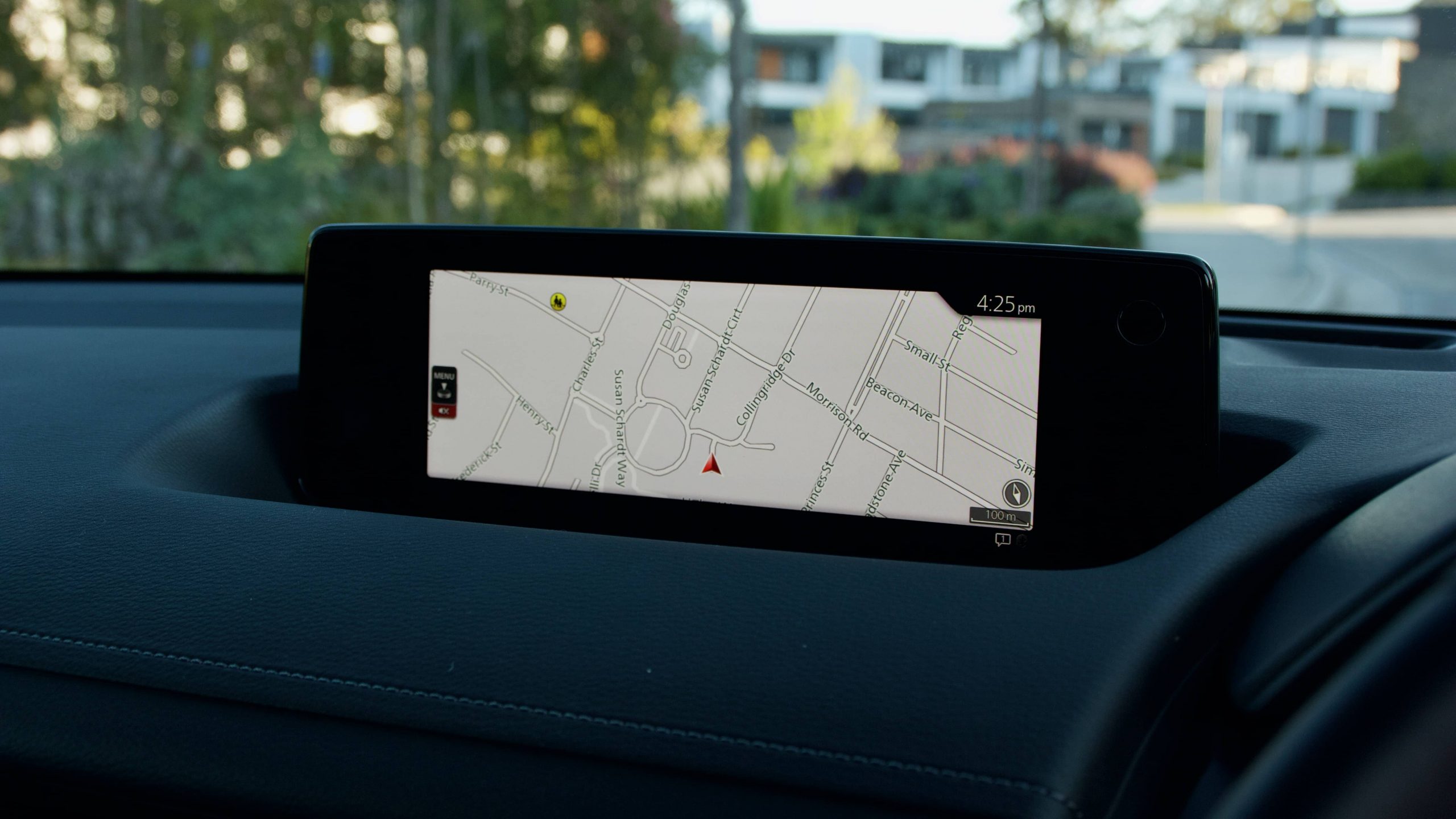
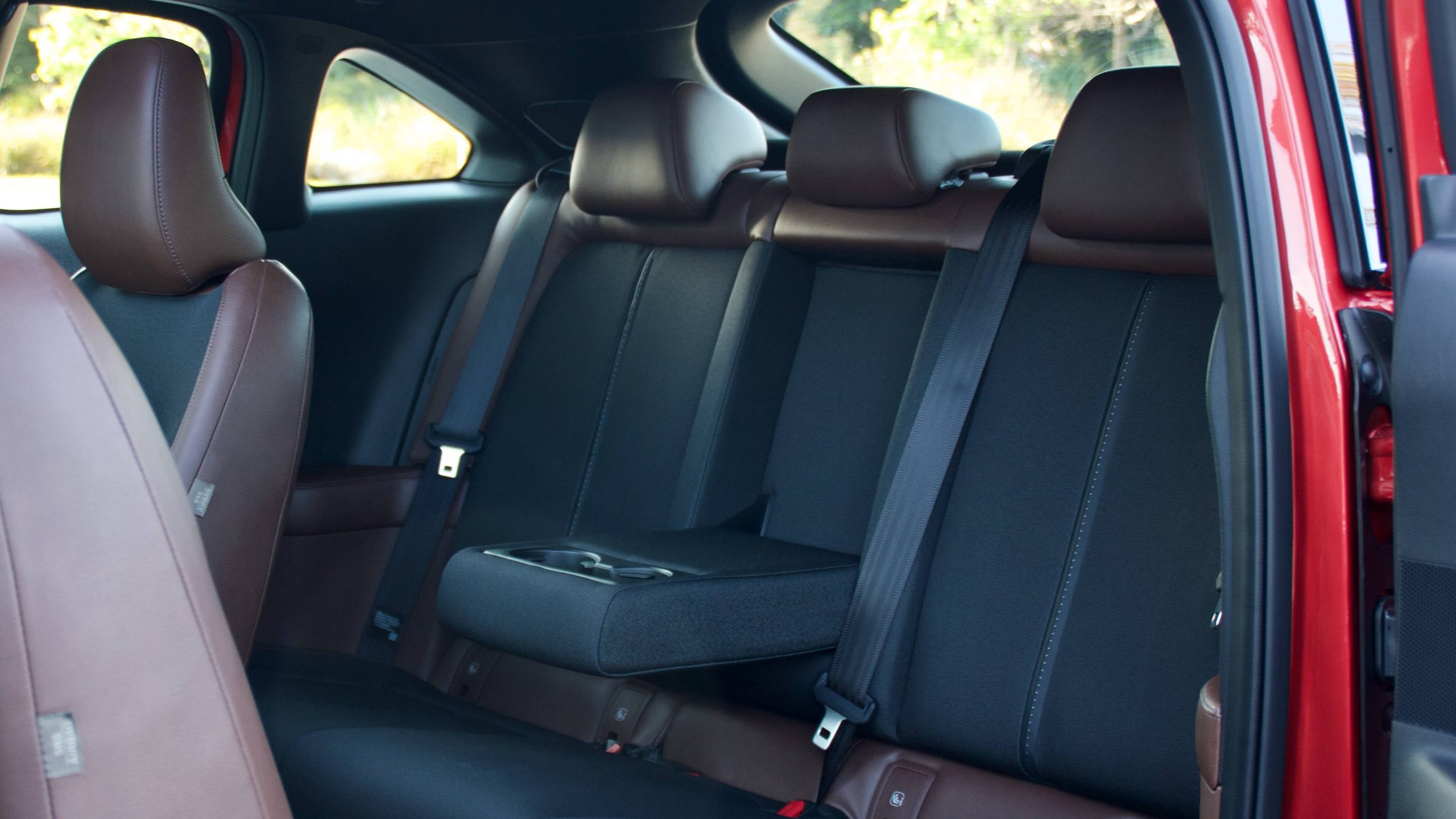
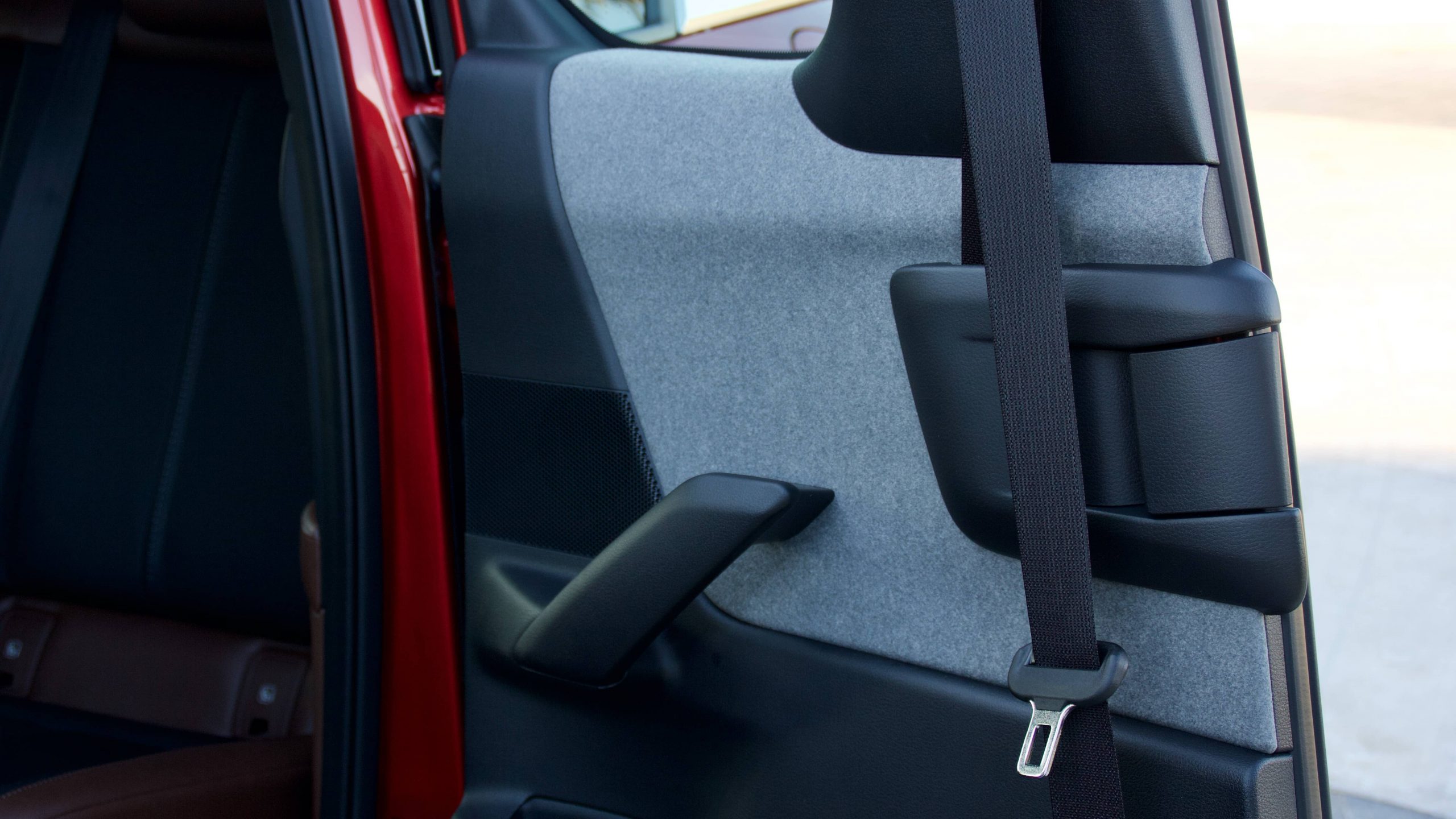
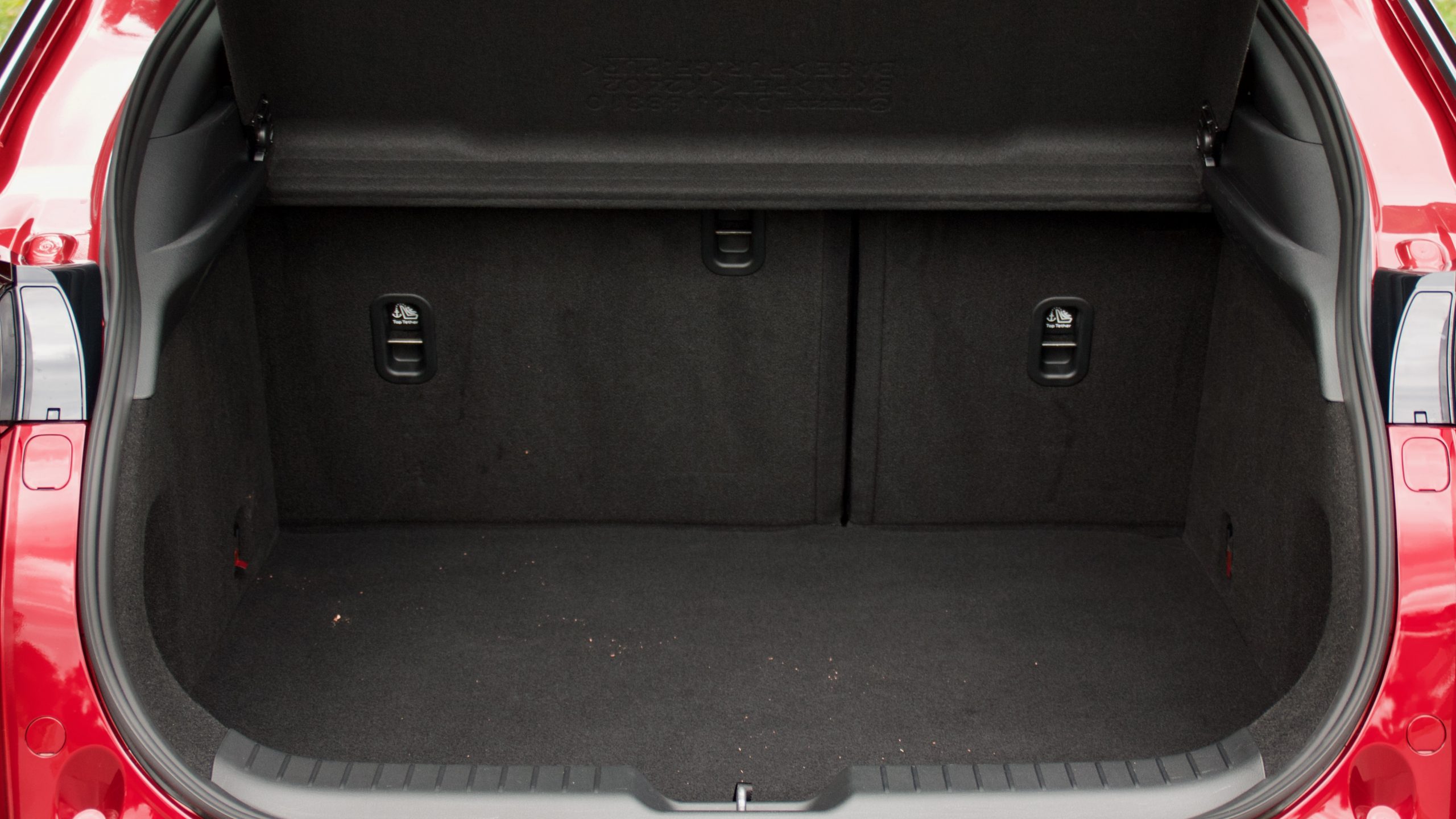
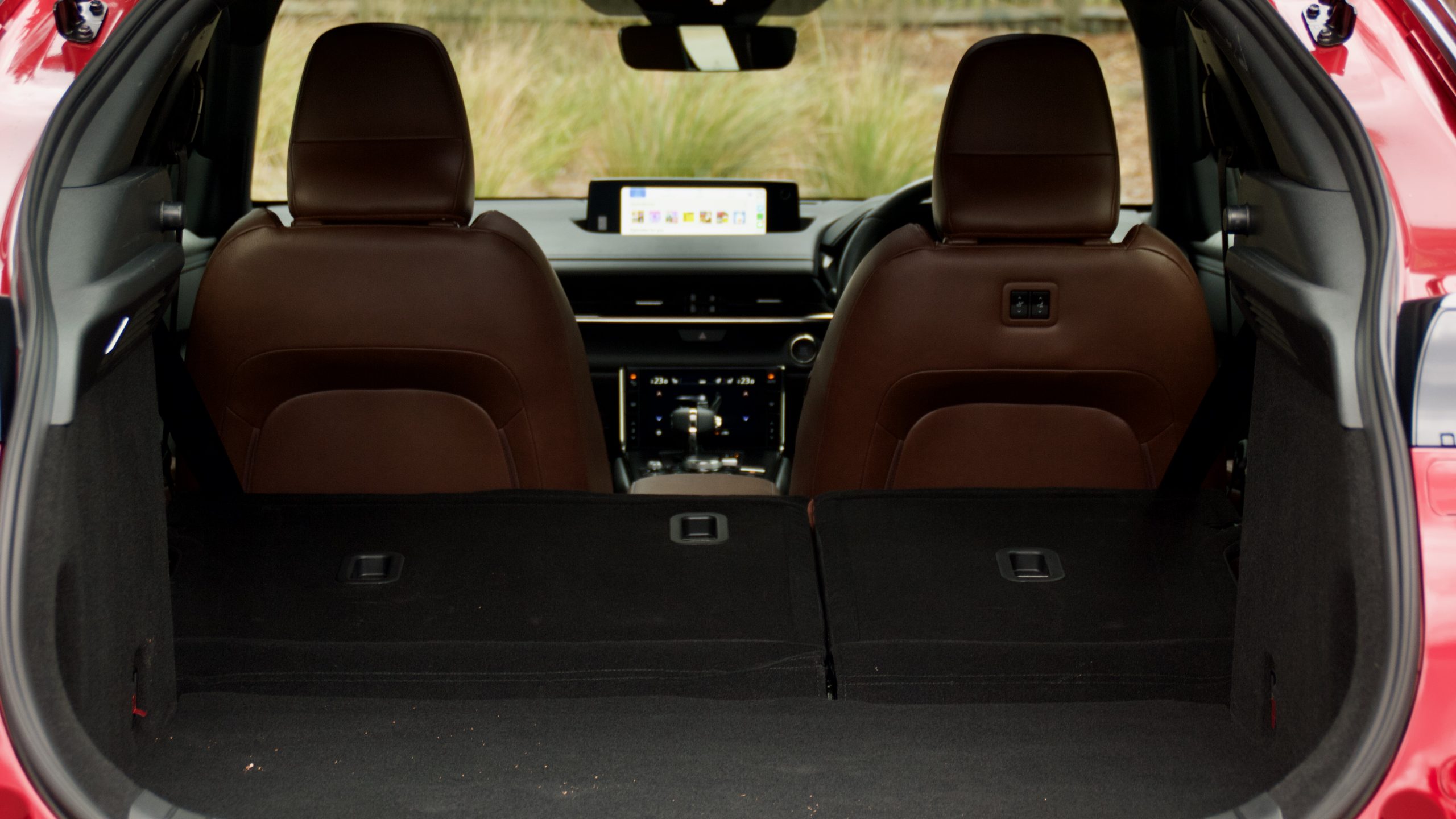
Leave a Reply